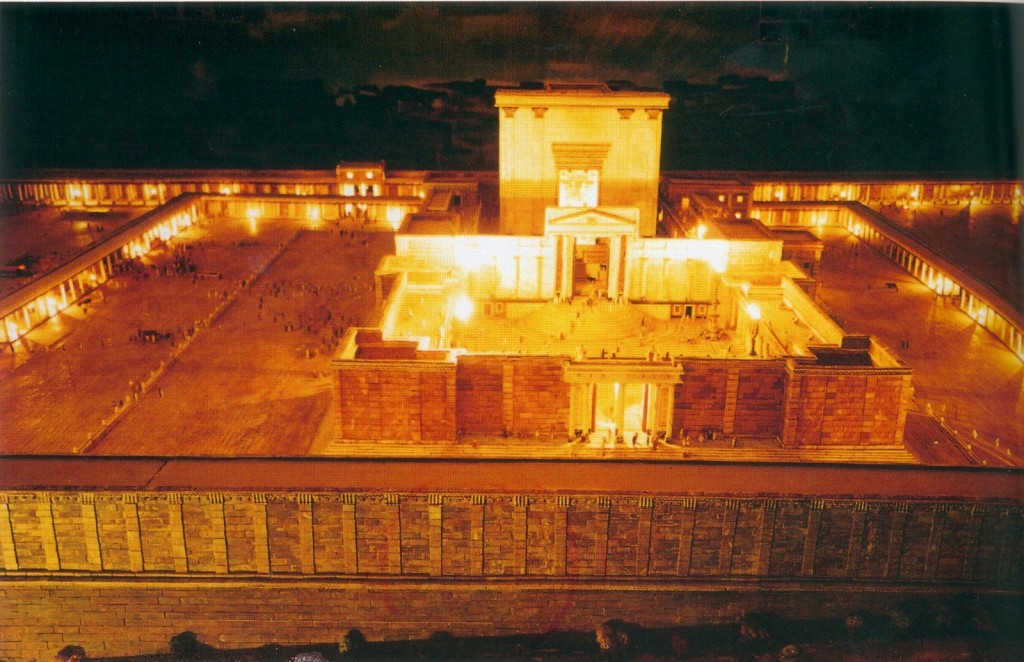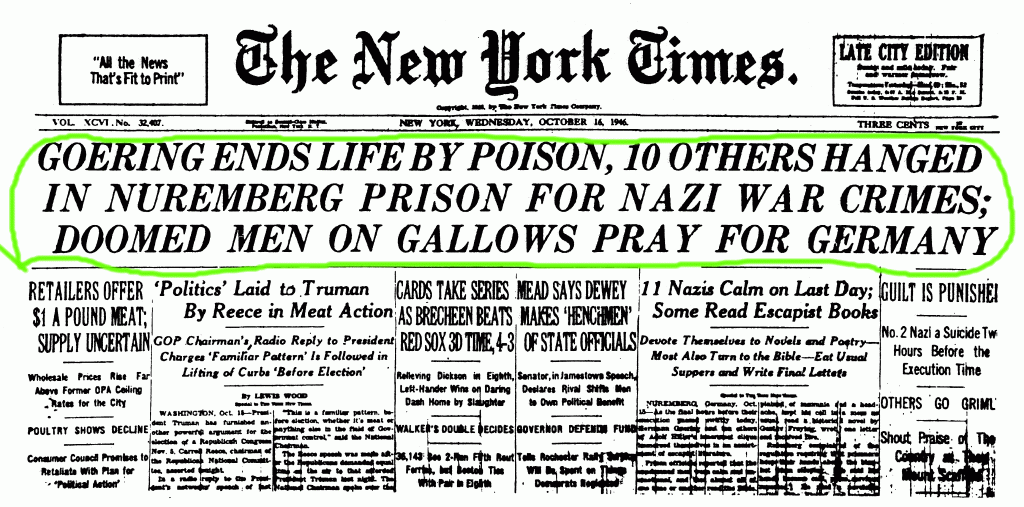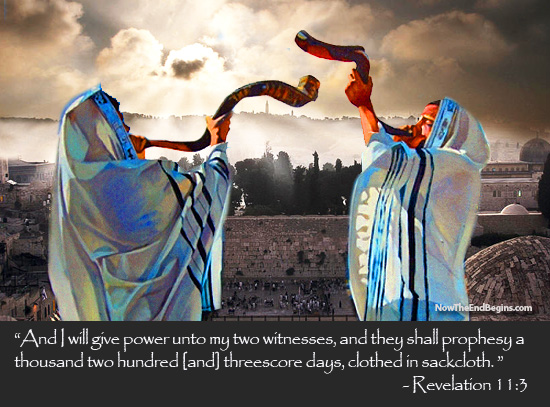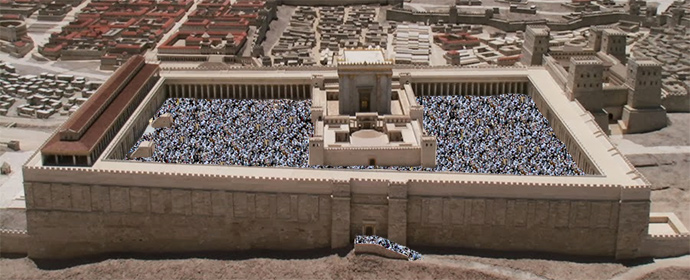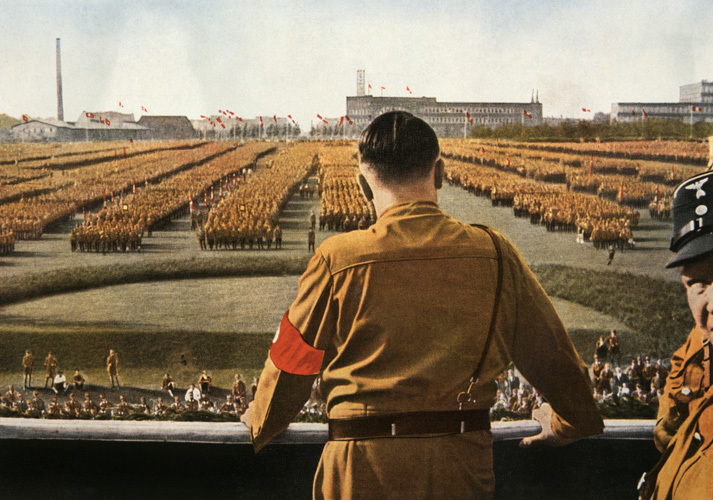There are few subjects in the Bible that engender such wild speculation as the Temple and the Abomination of Desolation. There are more “answers” and theories as to what the Bible means when it mentions the Third Temple.
Will there be a Third Temple?
The Abomination of Desolation also draws a great deal of speculation. Everything from microchips and credit cards, to Muslim armbands and tattoos – there is nothing off limits in the discussion of the coming desolation.
Coming in a close third is the discussion of the Two Witnesses. Who are they? What are they? What will they do? Are they even people? We have arguments for everything from Elijah and Enoch, to the Church and Israel.
However, make no mistake – as with everything in Biblical prophecy, the singular reason for so much confusion on these issues is the denying of the soon return of the Lord. That is the first and foremost reasoning as to why Satan invests so much time and effort to push false doctrines and false understanding. The Temple, the Two Witnesses, the Abomination of Desolation – all require a pre-trib rapture in order to come to pass. If doubt is cast on the words of the Bible in this regard, then doubt will extend to the truth of the rapture.
To study this subject in detail, we need to establish proof of the individual elements. Only then will the coming desolation of the Temple make sense. If you read about the desolation, yet are not sure of how scholars know there is a Temple in the first place, you will take what you learn here and begin to entertain additional false doctrines.
So, with that, we will start with a short list of what is coming in the tribulation. From there, we can delve into the individual elements of the coming desolation.
*** This will be a difficult thing to reason or comprehend. It will be even harder to look upon the images. However, they must be presented, and understood.
I caution everyone reading this post – what waits at the end will be difficult to look upon.
The understanding of what they reveal will change you forever.
This is the requirement of the Lord for me.
Those that forget history are doomed to repeat it. ***
What is Soon to Come
Here is the listing of general events with regards to the Temple, Two Witnesses, and the Abomination of Desolation:
The rapture;
The Treaty with Israel;
The first 42 months of the tribulation begins;
The Two Witnesses arrive;
They supervise the building of the Third Temple;
They train and prepare the 144,000 witnesses;
Construction takes 2.5 to 3 years to complete;
The Two Witnesses supervise the dedication of the Temple;
The Two Witnesses oversee the daily sacrifices at the Temple;
At the end of the first 42 months, the daily sacrifices are stopped;
The Two Witnesses are killed, resurrected and raptured after three days;
The Abomination is set up in the Temple;
The desolation begins;
It brings the most horrific period in all of world history;
The second 42 months of the tribulation begins.
With this, let’s begin with the first piece of the puzzle – the coming Third Temple.
The Holy Temple
The first thing that we need to establish is that there will be a Third Temple. As we said earlier, there are many attempts to find alternate meanings to the scriptures that declare the coming Temple. It will be built during the first 42 months of the tribulation, and the two witnesses will oversee the construction.
There are more scriptures on this than we have time to address. Yet, they are not all necessary to establish the point that the Temple is real, will be built, and will be in Jerusalem. It is not some “Holy Place” in Turkey, Rome, or anywhere else.
The first place we need to look is Daniel 9:24-27. This is the prophecy of Daniel’s 70 weeks, and it is the first place where the coming Temple is established. This is critical. It is this block of scripture that sets the timing and location of the Temple:
The Seventy Weeks
“Seventy weeks are decreed about your people and your holy city, to finish the transgression, to put an end to sin, and to atone for iniquity, to bring in everlasting righteousness, to seal both vision and prophet, and to anoint a most holy place.
Know therefore and understand that from the going out of the word to restore and build Jerusalem to the coming of an anointed one, a prince, there shall be seven weeks. Then for sixty-two weeks it shall be built again with squares and moat, but in a troubled time.
And after the sixty-two weeks, an anointed one shall be cut off and shall have nothing. And the people of the prince who is to come shall destroy the city and the sanctuary. Its end shall come with a flood, and to the end there shall be war. Desolations are decreed.
And he shall make a strong covenant with many for one week, and for half of the week he shall put an end to sacrifice and offering. And on the wing of abominations shall come one who makes desolate, until the decreed end is poured out on the desolator.”
There are several elements in these scriptures that we will deal with now, and several we will deal with later.
Notice first this scripture, and what it says:
Seventy weeks are decreed about your people and your holy city
This alone sets the timing and location. The coming Temple must be in Jerusalem, and during the times of the Jews. In order for this scripture to be fulfilled, Israel must be a nation, and Jerusalem under their control.
Anytime you see commentary that attempts to offer an alternate theory to the building of an actual Temple in Jerusalem, toss it in file 13. If it is not in Jerusalem, then it is not the Temple.
And he shall make a strong covenant with many for one week, and for half of the week he shall put an end to sacrifice and offering. And on the wing of abominations shall come one who makes desolate, until the decreed end is poured out on the desolator.
Here is the next piece of the puzzle. This tells us that the desolations to come must come in the 70th week. That rules out the Preterist notion that this has already been fulfilled. To that point, our Preterist friends have a bad habit of reading only the scriptures that suit their narrative. In order for 70 AD to be the completion of prophecy, they must be able to show how EVERY element of EVERY scripture on the coming tribulation was fulfilled.
Here is a link if you are unsure of what a Preterist is:
http://www.gotquestions.org/preterist.html
In case you are not familiar with the depth of description that the Bible gives on the subject – know this; the Bible literally details what the actual Antichrist does when he arrives. It details his travels, the battles he fights, and what he does. The Preterists never deal with these scriptures in their defense of their position.
The next thing that must be addressed is this:
he shall put an end to sacrifice and offering
There is no way around this. The original text makes it clear that this is literal sacrifices and literal offerings. Lets take a quick look at the three core elements of this scripture – sacrifice, offerings, and ending them.
First, the sacrifice:
Original Word: זֶ֫בַח
Part of Speech: Noun Masculine
Transliteration: zebach
Phonetic Spelling: (zeh’-bakh)
Short Definition: sacrifice
Word Origin
from zabach
Definition
a sacrifice
NASB Translation
feasting (1), offer (2), sacrifice (98), sacrifices (54), sacrificial (1), slaughter (1).
Brown-Driver-Briggs
זֶ֫בַח162noun masculine Judges 16:23 sacrifice **Phoenicianזבח of an offering of bread and oil CISi. 165, 12; 167. 8, compare RS Semitic 205 (2nd ed. 222). ׳ז absolute Genesis 31:54 +; constructExodus 34:25 +; זָ֑בַחLeviticus 17:8 16t.; suffix זִבְחוֺLeviticus 7:16;Ezekiel 34:15, זִבְחֲכֶםLeviticus 19:6; plural זְבָחִיםGenesis 46:1+; construct זִבְחֵיLeviticus 17:5 +; suffix 3 masculine pluralזִבְחֵיהֶםLeviticus 17:5, זְבָחֵימוֺDeuteronomy 32:38, זִבְחֹתָםHosea 4:19 etc.; — the common and most ancient sacrifice, whose essential rite was eating the flesh of the victim at a feast in which the god of the clan shared by receiving the blood and fat pieces. In the older literature it is distinguished from מִנְחָה and עֹלָה, in the later literature from חַטָּאת and אָשָׁם.
I. General name for all sacrifices eaten at feasts: —
1of the God of Israel Genesis 46:1; Exodus 10:25; Exodus 18:12 (E) Hosea 3:4; Hosea 6:6; Hosea 9:4; Amos 5:25; Isaiah 1:11;Isaiah 19:21; Deuteronomy 12:27; Deuteronomy 18:3; 1 Samuel 2:13,29; 1 Samuel 3:14; 1 Samuel 6:15; 1 Samuel 9:12,13; 1 Samuel 15:22 (twice in verse); 1 Samuel 16:3,5 (twice in verse); 2 Samuel 15:12; 1 Kings 8:62; 1 Kings 12:27; 2 Kings 5:17; 2 Kings 16:15; Psalm 40:7; Psalm 50:8; Psalm 51:18; Psalm 51:19; Proverbs 15:8; Proverbs 21:3,27; Isaiah 43:23,24; Isaiah 56:7; Jeremiah 6:20; Jeremiah 7:21,22; Jeremiah 17:26; Jeremiah 33:18; Ezekiel 40:42; Ezekiel 44:11; 1 Chronicles 29:21 (twice in verse); 2Chronicles 7:1,4,5,12;Nehemiah 12:43; Daniel 9:27; Ecclesiastes 4:17.
offer sacrifice
From zabach; properly, a slaughter, i.e. The flesh of an animal; by implication, a sacrifice (the victim or the act) — offer(- ing), sacrifice.
see HEBREW zabach
Lastly, here is what Vine’s has to offer on the meaning of sacrifice (the Hebrew words and characters do not come through in the text below – you can download the Vine’s PDF in Media Center and follow along):
SACRIFICE ( & , 2077), “sacrifice.”
This root with the meaning “to sacrifice” is represented in other Semitic languages: Akkadian, Ugaritic, Phoenician, Aramaic, and Arabic. # continued to be used in Mishnaic Hebrew, and its use is greatly reduced in modern Hebrew, since there is no temple. The word is used 162 times in the Hebrew Old Testament and in all periods.
The first occurrence is in Gen. 31:54: “Then Jacob offered sacrifice upon the mount, and called his brethren to eat bread: and they did eat bread, and tarried all night in the mount.” The basic meaning of is “sacrifice.” When a “sacrifice” had been slaughtered by the priest, he then offered it to God. The purpose was not just to create communion between God and man; rather, the “sacrifice” represented the principle that, without the shedding of blood, there is no forgiveness of sins (Lev. 17:11; cf. Heb. 9:22).
In the act of “sacrifice” the faithful Israelite submitted himself to the priest, who, in keeping with the various detailed regulations (see Leviticus), offered the “sacrifice” in accordance with God’s expectations. The “sacrifices” are the Passover “sacrifice” (Exod. 12:27), “sacrifice” of the peace offering (Lev. 3:1ff.), “sacrifice” of thanksgiving (Lev. 7:12), and “sacrifice” of the priest’s offering (%; Lev. 7:16).
The was not like the burnt offering (), which was completely burnt on the altar; and it was unlike the sin offering (), where the meat was given to the priest, for most of the meat of the was returned to the person who made the “sacrifice.” The fat was burned on the altar (Lev. 3:4-5), and the blood was poured out around the altar (3:2). The person who made the had to share the meat with the officiating priest (Exod. 29:28; Lev. 7:31-35; Deut. 18:3). In view of the fact that the people shared in the eating of the , the “sacrifice” became a communal meal in which the Lord hosted His people. Zephaniah’s message of judgment is based on this conception of “sacrifice”: “Hold thy peace at the presence of the Lord God: for the day of the Lord is at hand: for the Lord hath prepared a sacrifice, he hath bid his guests” (Zeph. 1:7). The Israelite came to the temple with the animal to be sacrificed. It was butchered, boiled, and eaten in the area of the sanctuary (1 Sam. 2:13).
There is more that we can add to this, but it is unnecessary at this point. The meaning and implications are clear. When Daniel records that the sacrifices are stopped, he is speaking of the literal blood sacrifices recorded in the Law of Moses. While some sacrifices were made outside of Jerusalem, Daniel does not distinguish between them. His statement is to the entirety of the sacrificial services, which are conducted in Jerusalem. We will cover that more in a moment.
Now, for the offerings:
Original Word: מִנְחָה
Part of Speech: Noun Feminine
Transliteration: minchah
Phonetic Spelling: (min-khaw’)
Short Definition: offering
Word Origin
from an unused word
Definition
a gift, tribute, offering
NASB Translation
gift (5), gifts (2), meal offering (7), meal offerings (1), offering (152), offering* (1), offerings (14), present (12), sacrifice (3), tribute (14).
Brown-Driver-Briggs
מִנְחָה153noun feminine – gift, tribute, offering (Late Hebrew id.; Phoenician מנחת; ᵑ7 מִנְחָתָא; on Arabic see above); — absolute ׳מGenesis 4:3 81t.; construct מִנְחַתLeviticus 2:7 22t.; suffix מִנְחָתִיGenesis 33:10 3t.; + 41 t. suffixes singular; plural suffixמִנְחֹתֶיךָPsalm 20:4; מִנְחֹתֵיבֶםNumbers 29:39; Amos 5:22; —
4grain offering (whether raw, roasted, ground to flour, or prepared as bread or cakes, see below. AV meat offering, misleading < RV meal-offering. GFMJudges 3:22 renderscereal oblation); — יָבִיאוּ אֶתהַֿמִּנְחָה בִּכְלִי טָהוֺרIsaiah 66:20they bring the grain offering in clean vessels (restored Jews are brought as such an offering), compare מנחה טהורהMalachi 1:11; brought in handsJeremiah 41:5 (late addition Co); received from hands Malachi 1:10;חִטִּים למנחה1 Chronicles 21:23wheat for grain offering; סֹלֶת1 Chronicles 23:29, mixed with oil Ezekiel 46:14, baked Ezekiel 46:20; distinguished from other offerings 1 Kings 8:64 (twice in verse) = 2Chronicles 7:7; 2 Kings 16:13,15 (3 t. in verse); Isaiah 43:23; Isaiah 57:6; Isaiah 66:3; Jeremiah 17:26; Jeremiah 33:18; Jeremiah 41:5(late editors Co), Ezekiel 42:13; Ezekiel 44:29; Ezekiel 45:15,17 (twice in verse); Ezekiel 45:25; Daniel 9:27; Psalm 40:7; used aloneNehemiah 13:5,9; Ezekiel 45:24; Ezekiel 46:5 (twice in verse); Ezekiel 46:7,11,14 (twice in verse); Ezekiel 46:15; Malachi 1:13; Malachi 2:12,13; Malachi 3:3,4; Judges 13:19,23 (R, GFMJud 322); (הָ) עֶרֶב מִנְחַתevening grain offering2 Kings 16:15; Ezra 9:4,5;Daniel 9:21; Psalm 141:2; מִנְחַת הַתָּמִידcontinual grain off.Nehemiah 10:34, compare Leviticus 6:13; Numbers 4:16.
gift, oblation, meat offering, present, sacrifice
From an unused root meaning to apportion, i.e. Bestow; a donation; euphemistically, tribute; specifically a sacrificial offering (usually bloodless and voluntary) — gift, oblation, (meat) offering, present, sacrifice.
As with the sacrifices, we see that these are literal offerings, made at the Temple. There is no ambiguity in Daniel’s words. They are literal, and they mean what they say.
Remember, there are four levels of understanding to all scriptures. While there is always spiritual and prophetic meanings, the first and literal rendering is NEVER discarded in favor of the other meanings. To the contrary, the spiritual and prophetic meanings always rely on the literal meaning to support what they present.
The literal meaning to offering and sacrifice are the standard by which the spiritual and prophetic meanings are possible!
Now, the ending of the sacrifices and offerings:
Strong’s Concordance
Original Word: שָׁבַת
Part of Speech: Verb
Transliteration: shabath
Phonetic Spelling: (shaw-bath’)
Short Definition: to
Brown-Driver-Briggs
שָׁבַת71 verb – cease, desist, rest (As šabâtu, probably cease, be completed DlWB ZimKAT 3. 593 (JenZA iv (1889), 277 f. is sceptical); Arabic cut off, interrupt; Late Hebrew has שֶׁבֶת neglect, etc., Aramaic שִׁבְתָּא cost of nealect); — Qal27 Perfect3masculine singular ׳שׁ Genesis 2:3 +; 3 plural שָׁבָ֑תוּLamentations 5:14, etc.; Imperfect3masculine singular יִשְׁבּוֺת Hosea 7:4; יִשְׁבֹּת Proverbs 22:10 2t.; 3 feminine singular תִּשְׁבֹּת Leviticus 26:35; תִּשְׁבַּת Leviticus 26:34; Nehemiah 6:3 +, etc.; —
Hiph`il40 Perfect3masculine singular הִשְׁבִּית Ruth 4:14 +; 2 masculine singular הִשְׁבַּתָּ Psalm 89:45; Psalm 119:119, etc.;Imperfect3masculine singular יַשְׁבִּיתּ Proverbs 18:18; Daniel 9:27;וַיַּשְׁבֵּת 2 Kings 23:11; 2Chronicles 16:5, etc.; Infinitive constructהַשְׁבִּית Psalm 8:3; לַשְׁבִּית Amos 8:4 (Ges§ 53q); Imperativemasculine plural הַשְׁבִּ֫יתוּ Isaiah 30:11; Participle מַשְׁבִּיתJeremiah 16:9; Psalm 46:10; —
1 cause to cease, put an end to: with accusative mirth Hosea 2:13, work 2Chronicles 16:5; Nehemiah 4:5; sacrifice Daniel 9:27; war Psalm 46:10, compare Isaiah 13:11; Ezekiel 7:24; Proverbs 18:18 6t., + קוֺל שָׂשׂוֺן מִן ׳הִשׁ Jeremiah 7:34; Jeremiah 16:9, compare Jeremiah 48:33.
cause to, let, make to cease, celebrate, cause make to fail
A primitive root; to repose, i.e. Desist from exertion; used in many implied relations (causative, figurative or specific) — (cause to, let, make to) cease, celebrate, cause (make) to fail, keep (sabbath), suffer to be lacking, leave, put away (down), (make to) rest, rid, still, take away.
There we have it! The sacrifices and offerings are literal, and will be literally stopped in the middle of the 70th week, or final 7 year tribulation period.
This is enough to establish the existence of a literal third Temple. However, given the amount of time and effort that goes into denying this fact, we can add several more pieces of evidence that will make it impossible to argue against the Temple.
Know therefore and understand that from the going out of the word to restore and build Jerusalem to the coming of an anointed one, a prince, there shall be seven weeks.
Here in verse 25, we see the reference to Jerusalem. That again confirms the literal nature of this block of scripture.
In verse 26, we have this:
And the people of the prince who IS to come shall destroy the city and the sanctuary.
Its end shall come with a flood, and to the end there shall be war.
Desolations are decreed.
This is a real problem for Preterists. Here is why. The “prince” that is to come is always attributed to be Titus in 70 AD. After all, he did destroy the Temple, and he was a “coming prince”. However, we have a slight issue with that, found in verse 27:
And he shall make a strong covenant with many for one week, and for half of the week he shall put an end to sacrifice and offering.
There is no evidence that such an action ever occurred in the siege of Jerusalem. Not only that, but Titus was not in Jerusalem for three and a half years, nor was the siege of Jerusalem three and half years in duration. The actual siege that laid waste to Jerusalem and the Temple started and ended in 70 AD.
Josephus even records that Titus had no desire to destroy the Temple in the first place! He had a great deal of respect for the sanctity of the House of God. It was only after the counsel of his generals that he made the decision to do so.
Moving forward, verse 26 also reveals these gems:
shall destroy the city and the sanctuary.
Here again, we have the literal city of Jerusalem, and the literal Temple. In fact, not just the Temple, but the Holy of Holies itself.
wə·haq·qō·ḏeš — 1 Occurrence
Daniel 9:26
HEB: ל֑וֹ וְהָעִ֨יר וְהַקֹּ֜דֶשׁ יַ֠שְׁחִית עַ֣ם
NAS: the city and the sanctuary. And its end
KJV: the city and the sanctuary; and the end
INT: and have the city and the sanctuary will destroy and the people
It is important to note that the word for sanctuary is used only one time in the Old Testament. It is important for this reason. The original and associated transliterations are used over 400 times. Yet, here in Daniel 9:26, we get a rendering that is never again found in the Bible. There is a reason for that.
It speaks to a very special place, during a very specific event.
Here is the meaning of the original forms and transliterations of the word for sanctuary:
Original Word: קֹ֫דֶשׁ
Part of Speech: Noun Masculine
Transliteration: qodesh
Phonetic Spelling: (ko’-desh)
Short Definition: holy
Word Origin
from an unused word
Definition
apartness, sacredness
NASB Translation
consecrated (2), consecrated thing (1), consecrated things (2), dedicated (1), dedicated gifts (2), dedicated things (5), holiness (9), Holy (6), holy (263), holies (6), holy ones (1), holy portion (3), holy thing (2), holy things (12), most holy (25), most holy place (6), most holy things (6), sacred (2), sacred gifts (2), sacred things (3), sacrifices (1), sacrificial (1), sanctuary (65), set apart (1), thing most holy (2), things that are most holy (1), things dedicated (1).
consecrated thing, dedicated thing, hallowed thing, holiness, most holy day, portion, thing, saint,
From qadash; a sacred place or thing; rarely abstract, sanctity — consecrated (thing), dedicated (thing), hallowed (thing), holiness, (X most) holy (X day, portion, thing), saint, sanctuary.
see HEBREW qadash
Remember, this is Daniel that is being spoken to by the Lord. The 70 weeks refers to Israel, the Jews, and the Temple alone. This cannot be the Vatican, or any of the great churches and cathedrals found in Turkey.
Nor can the Temple be an allegory for the human body, in which Christ in habits. We will deal with this mistake more in just a few moments.
Desolations are decreed.
This is something we will cover in more detail shortly. For now, it is enough to notice two things. The wording here is desolations, which is plural. Second, they are decreed.
This tells us that the coming Abomination of Desolation is more than just the image of the Beast that speaks and commands the mark to be taken. The truth of this resides in the meaning of desolations, and how it is more than we typically think.
This applies to the conversation in this manner. It is not a one shot deal. It is not Obama visiting the Temple Mount one time, or Erdogan visiting a cathedral in Istanbul. It is a continuing station or condition that lasts for the next three years after it begins.
It is something that occurs at the Temple, and it lasts for years.
Its end shall come with a flood, and to the end there shall be war.
I did not underline this above, but it bears mentioning nonetheless. This is a very specific reference to something Daniel has not yet been shown.
Daniel 11:30-31 ESV – For ships of Kittim shall come against him, and he shall be afraid and withdraw, and shall turn back and be enraged and take action against the holy covenant. He shall turn back and pay attention to those who forsake the holy covenant.
Forces from him shall appear and profane the temple and fortress, and shall take away the regular burnt offering. And they shall set up the abomination that makes desolate.
We will cover this block of scripture in greater detail shortly. For now, there is something that we need to notice.
shall take away the regular burnt offering
We have already shown that the Preterist interpretation is incorrect. This leaves only one possibility. What we see above can only be possible with the building of a third Temple. As you will se later, the regular burnt offering is a very specific reference that has but one meaning.
With that, let’s look at one additional evidence for this part of our study:
Revelation 11:1-3 ESV – Then I was given a measuring rod like a staff, and I was told, “Rise and measure the temple of God and the altar and those who worship there, but do not measure the court outside the temple; leave that out, for it is given over to the nations, and they will trample the holy city for forty-two months.
The first thing to notice is this:
and those who worship there
We have spoken extensively on tense in the Bible, as well and the subject of each scripture. In the piece above, we see active worship occurring at the Temple when the mid-trib period comes. The actual interpretation from the Greek reads like this:
“measure the Temple of God, and the altar, and those worshiping in it”
You will recall from “John, Angels and Martyrs” here in Tribulation Rising that Revelation Chapter 11 cover the entire first half of the tribulation, and everything that the two witnesses are involved in is complete before we actually reach chapter 11. This includes the entire 1,260 days of their work on earth, and the building, dedicating and operation of the Temple.
http://tribulationrisingcom.fatcow.com/john-angels-and-martyrs-final-proof-of-the-pre-trib-rapture/
If you have not yet read that study, it will absolutely amaze you how much we miss in scripture by simply failing to make critical observations.
Hence, by the time we reach the measuring of the Temple in 11:1-3, we have a fully built and operational Temple. It comes complete with Jews worshiping the Lord.
The word for “Temple” in the original Greek is ναὸν (naon), and it is used only 13 times in the Bible. Each time it has a very specific meaning:
STRONGS NT 3485: ναός
ναός, ναοῦ, ὁ (ναίω to dwell), the Sept. for הֵיכָל,
used of the temple at Jerusalem,
but only of the sacred edifice (or sanctuary) itself, consisting of the Holy place and the Holy of holies (in classical Greek used of the sanctuary or cell of a temple, where the image of the god was placed, called also δόμος, σηκός,
which is to be distinguished from τό ἱερόν, the whole temple, the entire consecrated enclosure;
this distinction is observed also in the Bible; see ἱερόν, p. 299{a}):Matthew 23:16f, 35 27:40; Mark 14:58; Mark 15:29; John 2:19;Revelation 11:2;
Now, let’s do the same for “altar”. The word used here is θυσιαστήριον (thysiastērion), and it used a total of six times in the Bible. As it was with “temple”, the same holds true with “altar”. It has an exact and specific meaning:
Thayer’s Greek Lexicon
STRONGS NT 2379: θυσιαστήριον
θυσιαστήριον, θυσιαστηρίου, τό (neuter of the adjectiveθυσιαστηριος (cf. Winer‘s Grammar, 96 (91)), and this fromθυσιάζω to sacrifice), a word found only in Philo (e. g. vita Moys. iii. § 10, cf. § 7; Josephus, Antiquities 8, 4, 1) and the Biblical and ecclesiastical writings; the Sept. times without number for מִזְבֵּחַ;
properly, an altar for the slaying and burning of victims; used of:
1. the altar of whole burnt-offerings which stood in the court of the priests in the temple at Jerusalem (B. D. under the word <reference_work:smith’s bible=”” dictionary=””>): Matthew 5:23; Matthew 23:18-20, 35; Luke 11:51; 1 Corinthians 9:13; 1 Corinthians 10:18; Hebrews 7:13; Revelation 11:1.
Finally, we can look at the meaning of “worship” to complete the picture. The original Greek uses the word προσκυνοῦντας (proskynountas), and it is likewise used only five times in the Bible. Again, it has a very specific and direct meaning:
STRONGS NT 4352: προσκυνέω
προσκυνέω, προσκύνω; imperfect προσεκύνουν; futureπροσκυνήσω; 1 aorist προσεκύνησα; from Aeschylus andHerodotus down; the Sept. very often for הִשְׁתַּחֲוָה (to prostrate oneself); properly, to kiss the hand to (toward) one, in token of reverence: Herodotus 1, 134; (cf. K. F. Hermann, Gottesdienstl. Alterthümer d. Griech. § 21; especially Hoelemann, Die Biblical Gestalt. d. Anbetung in his ‘Bibelstudien’ i., 106ff); hence, among the Orientals, especially the Persians, to fall upon the knees and touch the ground with the forehead as an expression of profound reverence (“to make a ‘salam'”); Latinveneror (Nepos, Conon. 3, 3),adoro (Pliny, h. n. 28, 5, 25; Suetonius, Vitell. 2); hence, in the N. T. by kneeling or prostration to do homage (to one) or make obeisance, whether in order to express respect or to make supplication. It is used a. of homage shown to men of superior rank: absolutely, Matthew 20:20(the Jewish high-priests are spoken of in Josephus
b. of homage rendered to God and the ascended Christ, to heavenly beings, and to demons: absolutely (our to worship) (cf. Winer‘s Grammar, 593 (552)), John 4:20; John 12:20; Acts 8:27; Acts 24:11;Hebrews 11:21 (cf. above); Revelation 11:1
When all of this is taken together, we see that John is measuring the actual Temple in Jerusalem. However, he is specifically measuring the most holy parts, the altar in the outer court, and those that are engaged in actual worship.
but do not measure the court outside the temple; leave that out, for it is given over to the nations,
This is critical to grasp. We have spoken at length elsewhere in Trib Rising projects on the fulfillment of prophecy, more specifically the individual elements of a total prophecy. For example, the rise of the Beast Kingdom in the last 42 months of the tribulation may contain 50 individual prophetic elements. All 50 elements must be fulfilled in order for the total prophecy to come to pass.
Some of those elements are fulfilled in a single moment. Some of them take time. It is not until all 50 conditions are satisfied that the rising Beast will be ready to assume the position it is given in Revelation chapters 17 and 18.
That is the same premise we see here with the Temple. Do not miss this. The court outside the Temple is given to the nations. It is not included in the measurements.
This is already fulfilled!
The courts outside the Temple are already given to the nations. The Temple Mount is currently under the control of Islam. The Dome of the Rock and Al Aqsa Mosque sit on the same land that once housed the Temple.
There has been much discussion on the possibility that the Dome of the Rock may not be sitting on the site of the actual Temple. Likewise, it is not understood that there is enough space on the Temple Mount for the Temple, Dome and Mosque. What’s more is that the area of the Temple Mount that is vacant looks more and more to be the actual spot of the first and second Temples.
Given that Islam worships on Friday, and the Jews on Saturday, there would be no conflict of schedules.
Of course, we know that Islam will not willingly permit this, and as of this writing – neither will Israel. Soon, neither will have a choice. We will cover that in the next section.
Also, it should be noted the the Temple Mount IS NOT a part of the Temple. It never has been. It is not a part of the prophecy that Christ gave concerning “one stone left upon another”. The Temple Mount is nothing more than the prepared base on which the actual Temple sits. Remember, it is called “Mount Zion” for a reason.
It sits on a mountain. The surface must be stabilized and even before you can build anything there.
This is also another indication of the flawed doctrines of the Preterists. The very fact that we see so many prophecies lining up that are supposed to be fulfilled does not bode well for what they teach.
Nor does it bode well for any doctrine that does not teach the coming of a literal Temple during the tribulation.
At this point I think we have put the notion of no third Temple to rest. It is not an allegorical or spiritual fulfillment. It is not some “almost” fulfillment located at a cathedral in Turkey. The Abomination of Desolation is a real and literal event at a real and literal Temple.
Now, you have the proof of the coming Third Temple!
The Two Witnesses
There is another debate within the Body of Christ on the identity of the Two Witnesses in Revelation 11. It ranges from Elijah and Enoch, to Elijah and Moses, to the church and Jews – and everything in between.
As we said in the beginning of this project, the witnesses are indeed two men that are tasked with three specific functions:
Build the Temple;
Prophesy the coming judgments;
Train the task the 144,000 sealed Jews.
This is a massive study. For the record, it is our contention that the witnesses are indeed Elijah and Enoch, as neither man has ever died.
Hebrews 9:27-28 KJV – And as it is appointed unto men once to die, but after this the judgment:
So Christ was once offered to bear the sins of many; and unto them that look for him shall he appear the second time without sin unto salvation.
This makes Elijah and Enoch the only two choices. You see, the only time in all of history that the Bible declares that man will not die is the rapture generation. It is those who are “alive and remain” that will never taste death. For all others ever born, death must come before the judgment.
That is yet another proof of the Two Witnesses, and their calling in the first 42 months. Like all others that come to salvation, they must also stand before the Judgment Seat of Christ. That happens after the conclusion of the first 42 months. They can only stand before Christ at this judgment if they have already died.
There are other reasons that we can get into, such as the Jewish and Gentile origins of both, and what each was called to do on earth. Those are beyond the scope of this study. However, there is one aspect that is worth noting.
Malachi 4:5 ESV – “Behold, I will send you Elijah the prophet before the great and awesome day of the Lord comes.
Here is the issue. It has been debated endlessly on whether or not John the Baptist was the fulfillment of the coming of Elijah. At first glance, it does seem that way.
Matthew 11:14 ESV – For all the Prophets and the Law prophesied until John, and if you are willing to accept it, he is Elijah who is to come.
This would appear to answer the question. So the answer is yes, right? Not so fast.
John 1:19-21 ESV – And this is the testimony of John, when the Jews sent priests and Levites from Jerusalem to ask him, “Who are you?”
He confessed, and did not deny, but confessed, “I am not the Christ.”
And they asked him, “What then? Are you Elijah?” He said, “I am not.”
So, who lied? Jesus? John? Jesus is the Son of the Most High God. John is the guy that this same Jesus said “among those born of women there has arisen no one greater than John the Baptist”.
So, who lied?
The answer is simple. Neither lied. Both spoke absolute truth.
What we have here is a prophetic double reference. Here is an excerpt from “John, Angels and Martyrs”:
Let’s start by looking a one verse in particular:
Revelation 1:10 KJV – I was in the Spirit on the Lord’s day, and heard behind me a great voice, as of a trumpet
We spoke earlier of revelations given through visions. Indeed, this is exactly what it appears that we have here – a vision. Being in the spirit certainly speaks to such a thing. I submit that this is probably the very best explanation for what John says here. So far, so good. No real issues to speak of – until we get a little further into Revelation:
Revelation 4:1-2 KJV – After this I looked, and, behold, a door was opened in heaven: and the first voice which I heard was as it were of a trumpet talking with me; which said, Come up hither, and I will shew thee things which must be hereafter.
And immediately I was in the spirit: and, behold, a throne was set in heaven, and one sat on the throne.
Question – why does John again tell us that he was in the spirit after hearing the words “Come up here, and I will show you the things that come after this”? Here is why I ask.
From his first reference of being in the spirit in 1:10 until 4:2, there is absolutely no indication that John ever left the spirit, or came out of the spirit. To the contrary, 1:10 to 4:2 is the exact same conversation, and it occurred in one sitting. When you go back and examine the verse between these two, it becomes clear that he never got “out of the spirit”.
So, the question remains – why the double reference?
Double references are not new in the Bible. They come in several forms. For instance, there is a prophetic double reference when it comes to Jesus going to Egypt as a baby. It is spoken when Israel goes to Egypt and when Jesus goes to Egypt. In one instance it says “my son, Israel”. In the other instance it says “my Son”. Both scriptures are nearly exact in their presentation. However, one speaks to Israel and the other to Jesus.
There is another type of prophetic double reference as well. In the story of Esther, the Bible tells us that the ten sons of Haman were hanged upon the gallows. Yet, several verses later, the Bible once again speaks to this. In both cases it is a present tense verse speaking to something that was soon to happen. Yet, the second reference occurs AFTER they have already died!
Jewish scholars thought this a mistake for thousands of years. That was until 1946.
When you look at the names of the ten sons of Haman in the original Hebrew, three of the sons have something peculiar with their names. One Hebrews letter is written only about half the size of the other letters. This is not normal. However, when you take the numeric value of those three letters as a date on the Jewish calendar, it matches the Gregorian year of 1946. That was the year that 10 Nazi’s were hanged for crimes against the Jewish people, and their attempts to exterminate the Jews – just as Haman and his ten sons tried to do.
It was not a mistake. It was a prophetic double reference designed to conceal evidence until the right time. It was offered as prophetic proof that the Word of God is truth. Indeed, that is what separates Jesus Christ from every other attempt at religion. Only the one true living God knows the ending from the beginning.
That is what we have in Revelation. The two references to being in the spirit are meant to reveal something to us that is critical to understand. While both instances appear to be the same thing, they are not. There is a difference between the two. Both do mean “in the spirit”. They are similar in the original text as well. Yet, there is something even there that comes into play with this discussion. ~~
That is what we have with Jesus and John, and whether or not he is Elijah. You have heard that John came in the spirit of Elijah. This is absolutely correct.
However, we must look to the rest of Malachi chapter four to complete the picture. As Malachi says, he will turn the hearts of fathers to their children and the hearts of children to their fathers, lest I come and strike the land with a decree of utter destruction.
John did indeed come before the great and terrible day of the Lord. However, look carefully at the rest of the story. He will turn the hearts of the fathers to their children and the hearts of children to their fathers. It is beyond the scope of this study, but this is part and parcel to the mission of the two witnesses with regards to the 144,000 sealed Jews, and the work they will be commissioned to do. It is also a reference to the effect that the rising Temple will have on the nation of Israel. As the Temple rises, the hearts of the people will indeed be turned – to their Father!
The heart of the Father shall indeed be turned to His children!
At this point, we need to address something else. The reason that the Temple needs to be built in the first place. There is a common refrain that I hear all the time from critics of a literal Temple.
“There won’t be a Temple. Jesus died on the cross. We are now the Temple of Christ. There is no new Temple required.”
The wording will be different, but the premise is always the same. Jesus came, and therefore God does not need a Temple. Our bodies become the Temple. This sounds good, and is true. We are the living Temple of the Living Savior. That said, we have already shown that the Temple seen in Revelation is the actual Temple. Also, we cover in great detail in other pages why the Temple seen in Revelation chapter 11 is NOT the heavenly Temple. You can read “John, Angels and Martyrs”, “The Rapture Bombshell in 2 Thessalonians” and “Matthew 24 and the Rapture” if you want to study this further.
Here are the links to the three projects listed above:
http://tribulationrisingcom.fatcow.com/john-angels-and-martyrs-final-proof-of-the-pre-trib-rapture/
http://tribulationrisingcom.fatcow.com/the-rapture-bombshell-in-2-thessalonians/
http://tribulationrisingcom.fatcow.com/matthew-24-and-the-rapture/
That said, this premise of “no Temple needed because of Jesus” hits one very serious snag.
The Jews have not accepted Jesus as their Savior. As a whole they have rejected Him.
Here is a short excerpt from “Time, Times, and a Dividing of Times”:
There are several other considerations required when dealing with prophetic time. We know that the tribulation is two periods of 42 months separated by a short space for a total of seven years. Likewise, we see the principle of “the short space” demonstrated in the giving of the 70 weeks of Daniel. There is an undetermined space between week 69 and 70, or between the covenants (the new covenant of Christ rejected and the false covenant of the Antichrist accepted). Likewise, we know that there must be eight days separating the rapture and the Judgment of Nations.
Furthermore, in looking at the prophecy of the 70 weeks in Daniel, it can be said that it is measured in covenant and decree time. We already discussed this in relationship to the start of the 70th week. However, the mid-span break in the tribulation is also accounted in the prophecy of the 70 weeks from this standpoint – the Antichrist breaks the covenant with Israel. Likewise, he issues a decree after that. What that tells us is this – the 70th week itself stops with the breaking of the accord with Israel and the invasion. From the time of the invasion, through the battle with the two witnesses, and the entering of the Temple, the 70th week is not active. It is not until the global decree – brought about by the image – that all the world shall bear the mark of the name of the Antichrist, that the 70th week resumes.
It is important to note that the decree to stop the sacrifices is not the decree that restarts the 70th week. We know this as the Bible declares this act as part and parcel to the completion of the Abomination of Desolation. In other words, it is the Abomination of Desolation that is the key, or the trigger for the time of Jacobs Trouble as shown in Matthew 24, Luke 13 and Mark 21. The decree to stop the sacrifices is but one singular part that brings the Abomination of Desolation. It is the Abomination that brings the image of the beast. In fact – the image of the Beast and the decree that all should be marked are the combined Desolation as they issue forth from the Temple. ~~
This is important to understand for this reason. Israel is unfinished business. Those that declare the third Temple as unnecessary fail to understand the big picture.
When Israel rejected Christ, the pause button was pushed. Prophetic time stopped. When they rejected Christ, they rejected the true covenant. After this rejection the Temple was destroyed and the light of the Gospel went to the Gentiles.
Israel rejected the true Messiah out of fear of Rome. They rejected the Son of God for the government of men.
In an ironic twist, they will soon accept the false messiah of men from fear of the government of God!
They will believe this coming savior to be their long awaited Messiah, and for fear of offending God Himself, they shall accept that which they should reject.
When they accept this false Messiah, the play button shall be pushed, and prophetic time will resume.
The reason that the Temple must be built is that all things must be restored to where they once were, so that the plan of the Lord can play out and all things be finished.
The first time around, the coming of the true messiah started a 70 year countdown that ended Israel as a nation. The second time around, that same 70 years will see Israel restored in time for the false messiah.
It is only after all things are back to the way they were on the day that Jesus was crucified that the end can play out. Just as three and a half years saw the Jews persecute the true messiah, there must now be three and a half years where the Jews are persecuted by the false messiah.
This is why there must be a Temple, that is fully active and functioning by the time mid-trib begins.
Here is an excerpt from “Biblical Proof of a Seven Year Tribulation”:
Here is an interesting parallel that shows the relationship between Israel, the Throne of David and the 70 weeks:
The Throne of David established in Jerusalem to the advent of Christ – 1,000 years.
The advent of Christ to the destruction of Israel and the Temple – 70 years.
Now, watch this:
Rebirth of Israel to the advent of Christ – 70 years.
Advent of Christ to the completion of the Throne of David – 1,000 years.
Think of it this way:
David’s throne is established in Jerusalem
1,000 years
Christ comes to Jerusalem
70 years – the rejecting of the true covenant
Israel destroyed
The long captivity in foreign lands
Israel reborn
70 years – the accepting of the false covenant
Christ comes to Jerusalem
1,000 years
David’s throne is completed in Jerusalem
That is the pattern that plays out with regards to the 69th and 70th week, the long space between them and why the 70th week has to come. You see, Israel is “unfinished business”. Soon that will change. ~~
http://tribulationrisingcom.fatcow.com/addendum-2-proof-of-a-seven-year-tribulation/
All of this points back to the same place – Elijah.
Malachi 4:5 ESV – “Behold, I will send you Elijah the prophet before the great and awesome day of the Lord comes.
This is why John was the coming of Elijah, and yet was not the coming of Elijah. In the prophetic double reference, we see that this does indeed occur twice. The first Elijah made straight the way of the true Messiah – whom Israel rejected.
So, Elijah must come again – this time it is the true Elijah that has not yet died, and restore all things so the that ledgers in heaven can be completed. This time, the real Elijah will restore all things, and Israel shall complete her destiny. This is only possible if everything is restored to where to was on that fateful Passover Day 2,000 years ago.
There is something else that must be addressed in this study. It is a quick point, that is easily addressed. It is the contention that the two witnesses are the church and Israel, the church and the 144,000 sealed Jews, or the church and whoever.
The point behind this premise is that the two witnesses are allegories for groups of people. I have seen many studies on this, most of which are rooted in the Book of Zechariah. They do a lot of mental gymnastics to show that Zechariah is purely allegorical, and points to the church as one of the witnesses.
Unfortunately for these folks, what they are using as evidence to support their claim actually proves their claim wrong. They simply fail to see what is actually there, make critical observations, and trust what they read.
By the way, just because something listed in prophecy has not yet happened, and you can’t understand what it might look like – that does not mean it is not a literal prophecy describing a literal event of thing.
You simply don’t understand what you are reading.
We can put this false doctrine to rest fairly easily. Is the church one of the two witnesses? Consider what the Bible tells us of the two witnesses, and what they will do:
And if anyone would harm them, fire pours from their mouth and consumes their foes.
If anyone would harm them, this is how he is doomed to be killed.
They have the power to shut the sky, that no rain may fall during the days of their prophesying, and they have power over the waters to turn them into blood and to strike the earth with every kind of plague, as often as they desire.
and those who dwell on the earth will rejoice over them and make merry and exchange presents, because these two prophets had been a torment to those who dwell on the earth.
So, I ask this question. Does any of this mesh with what the Bible tells us will happen with those that find and serve Christ in the tribulation?
How about this:
When he opened the fifth seal, I saw under the altar the souls of those who had been slain for the word of God and for the witness they had borne. They cried out with a loud voice,
“O Sovereign Lord, holy and true, how long before you will judge and avenge our blood on those who dwell on the earth?”
Then they were each given a white robe and told to rest a little longer, until the number of their fellow servants[c] and their brothers[d] should be complete, who were to be killed as they themselves had been.
Somehow, this seems oddly different from the recounting of what the two witnesses do during their time on the earth. Remember, the two witnesses are present during the entire time of the first 42 months of the tribulation.
Just in case you are banking on the fact that the first group of martyrs are shown in heaven before the official start of the tribulation, the second set of scriptures really takes issue with your premise:
Then one of the elders addressed me, saying, “Who are these, clothed in white robes, and from where have they come?” I said to him, “Sir, you know.” And he said to me,
“These are the ones coming out of the great tribulation. They have washed their robes and made them white in the blood of the Lamb.
We have a real problem here. Not only does this group get revealed AFTER the start of the tribulation, we see that they are the backslidden believers and those that failed to overcome for the Lord before the rapture.
These are they that claimed the name of Christ, yet soiled the robes they had already received before they died.
You can read more on this group in “John, Angels and Martyrs”.
http://tribulationrisingcom.fatcow.com/john-angels-and-martyrs-final-proof-of-the-pre-trib-rapture/
Then, there is this group:
Also I saw the souls of those who had been beheaded for the testimony of Jesus and for the word of God, and those who had not worshiped the beast or its image and had not received its mark on their foreheads or their hands. They came to life and reigned with Christ for a thousand years.
That is every group of believers found in the tribulation. All of them are persecuted, and all of them are killed. Not only that, but this occurs throughout the tribulation.
As we cover extensively in “Biblical Proof of a Seven Year Tribulation”, the two witnesses are one of the core proofs of the timing of the tribulation. Their life and death is timing specific. Their time of ministry is an exact 1,260 days. They die one time after that 1,260 days. They rise three days after that. There is no wiggle room in this, as the original language makes it clear that days means days, and the count of the days is exactly as advertised.
In other words, a body of believers that are persecuted and killed throughout the tribulation cannot be the two witnesses, as the two witnesses are invincible during the 1,260 days that they minister.
Building the Temple
We have established that there must be a third Temple built before the second 42 months of the tribulation, and that it must be operational before the two witnesses are finished with their 1,260 days. We have also discussed that the two witnesses are charged with building that Temple.
What we have not yet discussed is where the Bible records this charge.
This is a fascinating study. It covers many facets. A few undertaking of this subject is beyond the scope of this study. Yet, we need only a few irrefutable facts to establish the authority and calling of the witnesses to build the Temple.
There are two iron clad premises in the Bible which is critical to understanding what the witnesses will do. Here is the first of the two:
Proverbs 25:2 KJV – It is the glory of God to conceal a thing: but the honour of kings is to search out a matter.
Isaiah 28:10-13 KJV – For precept must be upon precept, precept upon precept; line upon line, line upon line; here a little, and there a little:
For with stammering lips and another tongue will he speak to this people. To whom he said, This is the rest wherewith ye may cause the weary to rest; and this is the refreshing: yet they would not hear.
But the word of the Lord was unto them precept upon precept, precept upon precept; line upon line, line upon line; here a little, and there a little; that they might go, and fall backward, and be broken, and snared, and taken.
This is a far deeper premise than most realize. It has a prophetic meaning, as does all scripture in the Bible. It speaks to the station of the overcomer, and what separates them from the mere believer. It speaks to the fruit, or visible evidence of the life of an overcomer.
Here is the second premise:
Ecclesiastes 1:9-10 KJV – The thing that hath been, it is that which shall be; and that which is done is that which shall be done: and there is no new thing under the sun.
Is there any thing whereof it may be said, See, this is new? it hath been already of old time, which was before us.
Ecclesiastes 3:14-15 KJV – I know that, whatsoever God doeth, it shall be for ever: nothing can be put to it, nor any thing taken from it: and God doeth it, that men should fear before him.
That which hath been is now; and that which is to be hath already been; and God requireth that which is past.
Simply stated, everything that comes in prophecy has already happened before. From the rapture to the Antichrist, there is an Old Testament picture of the things that are soon to come. In many cases there are multiple pictures revealing multiple aspects. Such is the case with the two witnesses.
It is also the case with the Abomination of Desolation. We will cover this in greater detail shortly. For now, know this – I am not talking about Titus or Antiochus Epiphanies. I am talking about something much darker.
Let’s start with the scripture that sets to scene, and reveals the two witnesses in Revelation chapter 11:
And there was given me a reed like unto a rod: and the angel stood, saying, Rise, and measure the temple of God, and the altar, and them that worship therein.
But the court which is without the temple leave out, and measure it not; for it is given unto the Gentiles: and the holy city shall they tread under foot forty and two months.
And I will give power unto my two witnesses, and they shall prophesy a thousand two hundred and threescore days, clothed in sackcloth.
These are the two olive trees, and the two candlesticks standing before the God of the earth.
And if any man will hurt them, fire proceedeth out of their mouth, and devoureth their enemies: and if any man will hurt them, he must in this manner be killed.
These have power to shut heaven, that it rain not in the days of their prophecy: and have power over waters to turn them to blood, and to smite the earth with all plagues, as often as they will.
And when they shall have finished their testimony, the beast that ascendeth out of the bottomless pit shall make war against them, and shall overcome them, and kill them.
There are additional scriptures here, but for the purposes of this discussion we have what we need. In these scriptures, there is one piece that we need to examine more closely:
These are the two olive trees, and the two candlesticks standing before the God of the earth.
This is the critical component of the calling of the witnesses, and it is the key to establishing who they are and what they do. This is a prophetic double reference, and it takes us back to the Books of Zechariah and Haggai.
Zechariah 4:11-13 ESV – Then I said to him, “What are these two olive trees on the right and the left of the lampstand?”
And a second time I answered and said to him, “What are these two branches of the olive trees, which are beside the two golden pipes from which the golden oil is poured out?”
He said to me, “Do you not know what these are?” I said, “No, my lord.”
Then he said, “These are the two anointed ones who stand by the Lord of the whole earth.”
First, let’s look at the word anointed as found in verse 14. It is the word hay·yiṣ·hār in the original Hebrew, and it is used only three times in the Bible to a very specific effect. It speaks to the oil of anointing, yet in these three examples it speaks to the new oil – which the requirement for anointing men to the work of the Lord.
It is a form of the word yitshar, which means “fresh oil”, in both the general and specific sense.
Original Word: יִצְהָר
Part of Speech: Noun Masculine
Transliteration: yitshar
Phonetic Spelling: (yits-hawr’)
Short Definition: oil
Brown-Driver-Briggs
- יִצְהָר noun [masculine] fresh oil (newly appeared, compare ‘Ausbruch’ LagBN 129 Köii. 1, 93; > Thes and others that which shines); — absolute ׳יִצ Hosea 2:10 +, suffix יִצְהָרֶ֑ךָ Deuteronomy 7:13 +; — fresh oil, as product of land, in un-manufactured state, usually + תִּירוֺשׁ, דָּגָן etc., rich possession, gift of, ׳י Hosea 2:10;Hosea 2:24; Jeremiah 31:12; Deuteronomy 7:13; Deuteronomy 11:14;Joel 2:19,24, so ׳חֵלֶב יִצ Numbers 18:12; Deuteronomy 28:51;Haggai 1:11; 2Chronicles 32:28; Nehemiah 5:11; tithed Deuteronomy 12:17; Deuteronomy 14:23; firstfruits for priest Deuteronomy 18:4;Nehemiah 10:38 compare Nehemiah 10:40; Nehemiah 13:5 (tithe for Levites), Nehemiah 13:12, for priest and Levite 2Chronicles 31:5; ׳זֵית יִצ 2 Kings 18:32 oil-olive, i.e. oil-yielding olive-trees, compare ׳יִצalone Joel 1:10; ׳יִצ as anointing oil only in ׳בְּנֵי הַיִּצ Zechariah 4:14, i.e. anointed ones.
anointed oil
From tsahar; oil (as producing light); figuratively, anointing — + anointed oil.
see HEBREW tsahar
For good measure we can take this a step further, and look at the words “two” and “ones”, to have the actual picture given by the Lord of the “two anointed ones”.
Original Word: שְׁנַ֫יִם
Part of Speech: Noun
Transliteration: shenayim or shettayim
Phonetic Spelling: (shen-ah’-yim)
Short Definition: two
Original Word: בֵּן
Part of Speech: Noun Masculine
Transliteration: ben
Phonetic Spelling: (bane)
Short Definition: sons
Brown-Driver-Briggs
בֵּן4870 noun masculine – son – (MI Phoenician בן; so Sabean CISiv. No. 2, compare בני DHMSemitic Sprachforsch. 6; Arabic ; Assyrian bin (u), LyonSargon 9, 1. 57; especially in bin-bin, grandsonCOTGloss, compare Dl below; Aramaic בַּר, , plural בְּנִין, ; compare Palmyrene, especially VogNo. 21. 31. 36a and others; possibly originally connected with בנה build, so Thes, compare Assyrian bânu,begetter (DlPr 104 & compare BaZMG 1887, 638 ff.); but all traces of this √ lost in Hebrew form; √ perhaps originally bilit. (בִּן, בֵּן) בַּן ֗֗֗ see Sta§ 183) — absolute ׳בּ
8 ׳ב as relative noun followed by word of quality, characteristic, etc. especially (α) בֶּןֿ(בני)חַיִל = mighty man 1 Samuel 14:52; 1 Samuel 18:17; 2 Samuel 2:7; 2 Samuel 13:28; 2 Samuel 17:10 (twice in verse); 1 Kings 1:52 7t. Chronicles; ׳אֲנָשִׁים בני ח Judges 18:2;2 Kings 2:16; אֶלֶף אִישׁ מִבְּנֵי הֶחָ֑יִל Judges 21:10; (β) בְּנֵי עַוְלָה wicked men 2 Samuel 3:34; 2 Samuel 7:10; 1 Chronicles 17:9;Hosea 10:9; ׳בֶּןעֿ Psalm 89:23 (for בני בליעל see בליעל); (γ) בְּנֵי מֶ֑רִי rebels Numbers 17:25 (compare בַּיִת); (δ) בְּנֵי הַתַּעֲרֻבוֺת sons of pledges = hostages 2 Kings 14:14 2Chronicles 25:24; (ε) בְּנֵי מָוֶת i.e. those deserving of death 1 Samuel 26:16; soבֶּןמֿות 2 Samuel 12:5; בְּנֵי תְמוּתָה appointed or exposed to death Psalm 79:11; Psalm 102:21; compare (ζ) בִּן הַכּוֺת one worthy of smiting Deuteronomy 25:2; (η) בְּנֵי עֹ֑נִי Proverbs 31:5; (θ)בְּנֵי חֲלוֺף Proverbs 31:8; (ι) בְּנֵי שָׁאוֺן Jeremiah 48:45 =tumultuous ones; so also (= שֵׁאת) בְּנֵי שֵׁת Numbers 24:17 compare RV Di and others; (κ) כְּנֵי הַיִּצְהָר Zechariah 4:14 i.e. anointed ones; (λ) בֶּןמֶֿשֶׁק Genesis 15:2 son of possession, i.e. heir; (μ) הֵילֵל בֶּןשָֿׁ֑חַר Isaiah 14:12 son of dawn; (ν) of animals בְּנֵיִ שָׁ֑הַץ i.e. proud beasts Job 28:8; Job 41:26; (ξ) of Jonah’s gourdבִּןלַֿיְלָה Jonah 4:10 (twice in verse); (ο) of a fertile hill קֶרֶן בֶּןשֶֿׁמֶן Isaiah 5:1. ~~
When taken together, we see that the Bible declares that the two witnesses are literally “two anointed sons” that stand by the Lord of the whole earth. This removes any possibility of some allegorical meaning, as the word for “two” is specific and absolute. It cannot be anything other than two men, anointed to this calling in the Lord.
What are these two branches of the olive trees
This is what Revelation chapter 11 was referencing. It is the direct connection to the Old Testament, and the indicator of what the Lord is revealing. So, the question becomes what exactly is the Bible revealing here? What does it tell us about the two witnesses?
Let’s look a little deeper into this chapter.
4:3-5 – And there are two olive trees by it, one on the right of the bowl and the other on its left.” And I said to the angel who talked with me, “What are these, my lord?” Then the angel who talked with me answered and said to me, “Do you not know what these are?” I said, “No, my lord.”
Notice that Zechariah is asking about the two olive trees. He does not know what they are. The answer provides the next critical piece of the equation.
4:6-7 – Then he said to me, “This is the word of the Lord to Zerubbabel: Not by might, nor by power, but by my Spirit, says the Lord of hosts.
Who are you, O great mountain? Before Zerubbabel you shall become a plain. And he shall bring forward the top stone amid shouts of ‘Grace, grace to it!’”
This is a turn that most never expect, or catch. When Zechariah asked of the two live trees – which we know to be the two witnesses – he is given the words spoken to Zerubbabel, the Governor of Judah under Darius, King of Persia.
It was Zerubbabel and Joshua the High Priest who were charged with the full power and authority to rebuild Jerusalem and the Temple. This is important to understand, and will open up your understanding of the two witnesses and the Third Temple in just a moment.
At this point, it is critical that you remember that Zechariah was given the understanding of Zerubbabel and the rebuilding of the Temple after he asked of the two witnesses. Here is why.
4:8-10 – Then the word of the Lord came to me, saying,
“The hands of Zerubbabel have laid the foundation of this house; his hands shall also complete it.
Then you will know that the Lord of hosts has sent me to you.
For whoever has despised the day of small things shall rejoice, and shall see the plumb line in the hand of Zerubbabel.
It should be noted that Zechariah wrote this book after the work had already begun on the Temple. In fact, the Book of Zechariah can be dated to as much as 40 to 50 years after the Book of Haggai. However, we can see by the text of the scriptures above that this is the case.
We see above the that foundations of the Temple have already been laid by the time Zechariah receives this vision. Here is why this is important. It prevents false doctrine which tries to ascribe Zechariah’s vision to the building of the Second Temple alone.
Here is the key piece:
The hands of Zerubbabel have laid the foundation of this house; his hands shall also complete it.
Then you will know that the Lord of hosts has sent me to you.
This is a bombshell!
Here is the definitive proof of the calling of the two witnesses, and especially Elijah. This scripture tells us that it is Zerubbabel that will finish the Temple. It is a conversation about the two witnesses. We have an additional confirmation of this in the next scripture:
For whoever has despised the day of small things shall rejoice, and shall see the plumb line in the hand of Zerubbabel.
Think of what this says. Those that have despised the things of the end, of distractions with no importance – things that take our eyes off the prize and affix them firmly on the things of the world around us (think Lot’s wife) shall rejoice, and see the plumb line in the hand of Zerubbabel!
The original Hebrew makes it clear that the plumb line and hand are literal in their writing. In other words, we will see the actual, physical building of the Temple! As with every other aspect of this study so far, it is a prophecy of literal events that come in the end times.
At this point we have more than enough to prove that the two witnesses are tasked with rebuilding the Temple. However, if we stop here, will will miss the most amazing gems yet to be discovered.
To dive deeper in this study, we need to understand a bit more about Zerubbabel. We find amazing insights to this end in the the Book of Haggai.
Here is what we find in regards to Zerubbabel in the first chapter of Haggai:
The People Obey the Lord
12 Then Zerubbabel the son of Shealtiel, and Joshua the son of Jehozadak, the high priest, with all the remnant of the people, obeyed the voice of the Lord their God, and the words of Haggai the prophet, as the Lord their God had sent him. And the people feared the Lord.
13 Then Haggai, the messenger of the Lord, spoke to the people with the Lord‘s message, “I am with you, declares the Lord.” 14 And the Lord stirred up the spirit of Zerubbabel the son of Shealtiel, governor of Judah, and the spirit of Joshua the son of Jehozadak, the high priest, and the spirit of all the remnant of the people.
And they came and worked on the house of the Lord of hosts, their God, on the twenty-fourth day of the month, in the sixth month, in the second year of Darius the king.
That is the gist of what was happening. To further establish who Zerubbabel and Joshua are, here is the opening greeting in the Book of Haggai:
In the second year of Darius the king, in the sixth month, on the first day of the month, the word of the Lord came by the hand of Haggai the prophet to Zerubbabel the son of Shealtiel, governor of Judah, and to Joshua the son of Jehozadak, the high priest:
So, two men are tasked with rebuilding the Temple. Recall what we established earlier – there is no new thing under the sun. Everything in prophecy must have an Old Testament picture, or it is not prophecy nor will it come to pass.
Notice also the ranks of these two men. They are the Governor of Judah, and the High Priest. You may have also noticed that the name of the High Priest is Joshua. That makes the second Joshua that in the Old Testament the picture of Christ. In the second Joshua we have the High Priest that establishes the House of the Most High God. In the first Joshua, we have the picture of the Lion of the Tribe of Judah. This is a worthwhile study in it’s own right.
The bulk of the short Book of Haggai is prophetic, and speaks to the coming Temple of the Lord. That is where we find the gems that reveal what we are seeking – the coming Third Temple and the orders of the two witnesses to build it.
There is one small nugget that I am going to point out, and leave for you to take to the Lord.
The Coming Glory of the Temple
2 In the seventh month, on the twenty-first day of the month, the word of the Lord came by the hand of Haggai the prophet
Notice the date for this word to Haggai. It came on the 21st day of the seventh month. This is prophetic for reasons I cannot even begin to relate. When you have the time, take this piece back to “Coming Signs 2”, and look at in relation to the timing of the start of the tribulation.
http://tribulationrisingcom.fatcow.com/coming-signs-2-joel-and-the-timing-of-the-end/
That said, here is where the meat of the discussion comes in.
2:6-9 – For thus says the Lord of hosts: Yet once more, in a little while, I will shake the heavens and the earth and the sea and the dry land.
And I will shake all nations, so that the treasures of all nations shall come in, and I will fill this house with glory, says the Lord of hosts.
The silver is mine, and the gold is mine, declares the Lord of hosts.
The latter glory of this house shall be greater than the former, says the Lord of hosts. And in this place I will give peace, declares the Lord of hosts.”
Let’s recap what we have so far. Revelation declares the two witnesses as the two olive branches to the right and left of the candlestick.
That takes us to Zechariah, where we find that the two witnesses will be tasked with building the literal Temple.
The study of Zerubbabel – where the two witnesses will get their authority to rebuild the Temple – gives us the image of Jesus Christ as the High Priest. We also find the second player in our study – Joshua, the High Priest – as that picture of Christ.
Zerubbabel and Joshua are tasked with building the Second Temple, which will be the lesser glory when compared to the coming Third Temple.
Now for the next piece.
Zerubbabel Chosen as a Signet
The word of the Lord came a second time to Haggai on the twenty-fourth day of the month, “Speak to Zerubbabel, governor of Judah, saying, I am about to shake the heavens and the earth, and to overthrow the throne of kingdoms.
I am about to destroy the strength of the kingdoms of the nations, and overthrow the chariots and their riders. And the horses and their riders shall go down, every one by the sword of his brother.
On that day, declares the Lord of hosts, I will take you, O Zerubbabel my servant, the son of Shealtiel, declares the Lord, and make you like a signet ring, for I have chosen you, declares the Lord of hosts.”
This is beyond amazing. Here we have the establishment of the authority that is granted to the two witnesses. It is the signet of Zerubbabel. It is here that we see the parallels between the witnesses and Zerubbabel.
It is not Zerubbabel himself that comes as one of the witnesses. Rather, it is a witness that comes in his office and station. In the scriptures above, we see that when the day comes, the Lord will once again commission someone to the task of rebuilding the Temple. To do so, He will establish the Office of Zerubbabel, and grant the authority of that office to the two witnesses.
In reality, it will be one witness that holds the Office and authority of Zerubbabel, and the other witness will hold the office of Joshua the High Priest. Zerubbabel supervised the building of the Temple, and Joshua supervised the re-establishment of the office of the priests, and the training of those that held this office.
However, in the tribulation, we will see the fulfillment of this office and authority. This time, it will be the Third Temple that is built, and the 144,000 sealed Jews will be trained as priests in the order of Melchizedek. They will be trained and prepared for their station in the Kingdom of Priests – in the service of the Lord and Savior, Jesus Christ.
Believe it or not, this is not the most amazing piece of all of this. It gets better. We can take the study of the authority of the two witnesses even further, and reveal something that very few have ever understood. Not only that, but we can bring this piece of the study full circle, and tie into the prophetic double reference we spoke of earlier.
The key to authority of the two witnesses is the understanding of the signet, and why the Lord declared to Zerubbabel that He would make him a signet ring.
First, the word used here in the original Hebrew is ka·ḥō·w·ṯām, and it is used only twice in the Bible. It is used in Songs 8:6, and gives an insight into what the signet ring actually is. It is a seal.
The original transliteration from which ka·ḥō·w·ṯām is derived is used only 14 times in the Bible. It is a rare word, that denotes something very special.
Original Word: חוֹתָם
Part of Speech: Noun Masculine
Transliteration: chotham
Phonetic Spelling: (kho-thawm’)
Short Definition: seal
I. חֹתָם, חוֺתָם noun masculineJob 41:7 – seal, signet-ring – (Aramaic ; Ethiopic — see LagBN 116) — absoluteחֹתָם Exodus 28:11 2t.; חוֺתָם Jeremiah 22:24 8t.; suffix חֹתָֽמְךָGenesis 38:18, חֹתָמוֺ 1 Kings 21:8; — on supposed constructחוֺתַם see foregoing; — seal, signet-ring, hung by a cord (מָּתִיל) about the neck Genesis 38:18 (J; = חֹתֶמֶת Genesis 38:25), or (later ?) worn on (finger of) right hand Jeremiah 22:24, (BenzArchäol. 106); the two customs apparently combined Songs 8:6 (עַללִֿבֶֹּךָ,עַלזְֿרוֺעֶךָ); used to attest a royal missive 1 Kings 21:8 (instrumental of verb חתם); a precious article Haggai 2:23 (simile of Zerubbabel);׳מִּתּוּחֵי ח engravings of a seal, as model for cutting names and inscription on precious stones and gold plate Exodus 28:11,21,26;Exodus 39:6,14,30 (all P; see Benz258ff.); ׳חֹמֶר ח Job 38:14 = clay of (under) a signet; צָ֑ר ׳ח Job 41:7 a close signet, i.e. one that is closely pressed down, simile of closely joined (סָגוּר) scales of crocodile.
We see here that the signet is a royal seal, or royal seal upon a ring. There is also another word in the original Hebrew that more accurately reflects signet as a ring, as opposed to seal:
Original Word: עִזְקַת
Part of Speech: Noun Feminine
Transliteration: izqah
Phonetic Spelling: (iz-kaw’)
Short Definition: ring
I included this word because of the additional insight it brings to the conversation. Strong’s records the meaning of izqah as “signet ring, used to validate official business“.
Both uses mean the same thing, with each word emphasizing a slight difference between the two. The royal seal remained affixed upon the building, standards and structures. The signet ring was the transmission of that royal authority wherever the bearer went. If they had the ring on them, then the authority of the royal seal was with them.
Whosoever had the royal seal upon the ring, or the signet ring, that same person carried the full authority of the King!
It is the extent of that authority that is truly amazing. Rather, let me say it like this. When it is the authority given to the Lord’s purposes, it is beyond reproach. It is absolute. It is unyielding. There is an example in the Bible which shows just how much power and authority sits behind such a seal.
It is in the story of Esther.
In Esther, we see something that I have referenced already. Esther is the story of the plot against the Jews by Haman, a chief minister to King Ahasuerus of Persia, in 480 BC. In this plot, Haman and his ten sons sought to round up and exterminate the Jews. They built ten gallows that ultimately cost Haman and his sons their lives. This is the source of one of the prophetic double references in the Bible.
Haman had plotted against the Jews, and hid his intentions from the King. He had disguised to true nature of what he wanted to do behind the facade of the good of the Kingdom. He went to the King, and sold his plot under less than honest terms. You see, Haman had been promoted above all the servants of the Kingdom, even setting Haman upon a throne.
When Haman entered the gate, the King had commanded that all should bow down to him. However, Mordecai the Jew – cousin of now Queen Esther – would not bow as he was a Jew. After days of refusing to bow, Haman was enraged. So, he hatched a plot to wipe out the Jews.
The King was not told by Haman that is was the Jews that he sought to destroy, or why. So, the King granted Haman the authority to carry out his plan.
Esther 3:10-11 ESV – So the king took his signet ring from his hand and gave it to Haman the Agagite, the son of Hammedatha, the enemy of the Jews. And the king said to Haman, “The money is given to you, the people also, to do with them as it seems good to you.”
We see the signet ring being given from the hand of the King himself. This indicates the absolute power that the signet ring holds. The Bible records the reach of the signet, and the effect to which it was used.
Then the king’s scribes were summoned on the thirteenth day of the first month, and an edict, according to all that Haman commanded, was written to the king’s satraps and to the governors over all the provinces and to the officials of all the peoples, to every province in its own script and every people in its own language.
It was written in the name of King Ahasuerus and sealed with the king’s signet ring.
Do not miss what was revealed here. An edict with full royal power was given by Haman. That power was confirmed when the edict was sealed with the signet ring.
The signet was the name of the King himself.
Letters were sent by couriers to all the king’s provinces with instruction to destroy, to kill, and to annihilate all Jews, young and old, women and children, in one day, the thirteenth day of the twelfth month, which is the month of Adar, and to plunder their goods.
A copy of the document was to be issued as a decree in every province by proclamation to all the peoples to be ready for that day.
The couriers went out hurriedly by order of the king, and the decree was issued in Susa the citadel.
However, the plan was not to be. Queen Esther had risked her life, and saved the Jews. Haman was hanged upon the gallows that he had built in his own home for Mordecai.
On that day King Ahasuerus gave to Queen Esther the house of Haman, the enemy of the Jews. And Mordecai came before the king, for Esther had told what he was to her.
And the king took off his signet ring, which he had taken from Haman, and gave it to Mordecai. And Esther set Mordecai over the house of Haman.
At this point, the royal decrees issued by Haman are still in effect. They were royal decrees, and could not be rescinded simply because Haman was dead. It took royal authority to counter royal authority. Only the authority on which the decree was issued could stop that which was set in motion.
Esther rose and stood before the king. And she said, “If it please the king, and if I have found favor in his sight, and if the thing seems right before the king, and I am pleasing in his eyes, let an order be written to revoke the letters devised by Haman the Agagite, the son of Hammedatha, which he wrote to destroy the Jews who are in all the provinces of the king.
Then King Ahasuerus said to Queen Esther and to Mordecai the Jew, “Behold, I have given Esther the house of Haman, and they have hanged him on the gallows,[a] because he intended to lay hands on the Jews. 8 But you may write as you please with regard to the Jews, in the name of the king, and seal it with the king’s ring, for an edict written in the name of the king and sealed with the king’s ring cannot be revoked.”
Here is the power that Mordecai was able to wield under the signet of the King:
The king’s scribes were summoned at that time, in the third month, which is the month of Sivan, on the twenty-third day. And an edict was written, according to all that Mordecai commanded concerning the Jews, to the satraps and the governors and the officials of the provinces from India to Ethiopia, 127 provinces, to each province in its own script and to each people in its own language, and also to the Jews in their script and their language.
10 And he wrote in the name of King Ahasuerus and sealed it with the king’s signet ring.
Then he sent the letters by mounted couriers riding on swift horses that were used in the king’s service, bred from the royal stud, 11 saying that the king allowed the Jews who were in every city to gather and defend their lives, to destroy, to kill, and to annihilate any armed force of any people or province that might attack them, children and women included, and to plunder their goods, 12 on one day throughout all the provinces of King Ahasuerus, on the thirteenth day of the twelfth month, which is the month of Adar.
13 A copy of what was written was to be issued as a decree in every province, being publicly displayed to all peoples, and the Jews were to be ready on that day to take vengeance on their enemies.
14 So the couriers, mounted on their swift horses that were used in the king’s service, rode out hurriedly, urged by the king’s command. And the decree was issued in Susa the citadel.
Then Mordecai went out from the presence of the king in royal robes of blue and white, with a great golden crown[b] and a robe of fine linen and purple, and the city of Susa shouted and rejoiced.
16 The Jews had light and gladness and joy and honor. 17 And in every province and in every city, wherever the king’s command and his edict reached, there was gladness and joy among the Jews, a feast and a holiday. And many from the peoples of the country declared themselves Jews, for fear of the Jews had fallen on them.
As amazing as this is, the best is yet to come. The plan to exterminate the Jews failed. They were able to defend themselves, and Haman’s ten sons were hanged on the ten gallows that they had built. Now comes the crux of the issue – the absolute power and authority of the signet, and what it means in relation to the things of God.
And Mordecai recorded these things and sent letters to all the Jews who were in all the provinces of King Ahasuerus, both near and far,
obliging them to keep the fourteenth day of the month Adar and also the fifteenth day of the same, year by year, as the days on which the Jews got relief from their enemies, and as the month that had been turned for them from sorrow into gladness and from mourning into a holiday;
that they should make them days of feasting and gladness, days for sending gifts of food to one another and gifts to the poor.
So the Jews accepted what they had started to do, and what Mordecai had written to them.
For Haman the Agagite, the son of Hammedatha, the enemy of all the Jews, had plotted against the Jews to destroy them, and had cast Pur (that is, cast lots), to crush and to destroy them.
But when it came before the king, he gave orders in writing that his evil plan that he had devised against the Jews should return on his own head, and that he and his sons should be hanged on the gallows. Therefore they called these days Purim, after the term Pur.
Therefore, because of all that was written in this letter, and of what they had faced in this matter, and of what had happened to them, the Jews firmly obligated themselves and their offspring and all who joined them, that without fail they would keep these two days according to what was written and at the time appointed every year, that these days should be remembered and kept throughout every generation, in every clan, province, and city, and that these days of Purim should never fall into disuse among the Jews, nor should the commemoration of these days cease among their descendants.
Then Queen Esther, the daughter of Abihail, and Mordecai the Jew gave full written authority, confirming this second letter about Purim. Letters were sent to all the Jews, to the 127 provinces of the kingdom of Ahasuerus, in words of peace and truth, that these days of Purim should be observed at their appointed seasons, as Mordecai the Jew and Queen Esther obligated them, and as they had obligated themselves and their offspring, with regard to their fasts and their lamenting. The command of Queen Esther confirmed these practices of Purim, and it was recorded in writing.
To end this story, we find this:
And all the acts of his power and might, and the full account of the high honor of Mordecai, to which the king advanced him, are they not written in the Book of the Chronicles of the kings of Media and Persia?
For Mordecai the Jew was second in rank to King Ahasuerus, and he was great among the Jews and popular with the multitude of his brothers, for he sought the welfare of his people and spoke peace to all his people.
Here is what we must takeaway from what we have just covered. It is not just that the signet delivered royal power first to Haman, then to Mordecai. It is something much more profound and shocking, and is at the heart of the signet of Zerubbabel – the authority that is granted to the two witnesses.
It’s that the authority of the signet given to Mordecai was more than the signet of the King. It was the signet of the King of the world. The King of Persia is significant, in that he is known as the King of the world, or by his other moniker:
King of kings.
Now you are starting to get the prophetic picture.
This entire episode is the prophetic picture of the coming time of the tribulation, and Jacob’s trouble. It is no accident that the signet plays such an important role in what we read. The story of Esther encodes the tribulation, the Antichrist, and the power of God’s authority granted to His witnesses.
However, there is one last observation that must be made in the story of Esther.
Letters were sent to all the Jews, to the 127 provinces of the kingdom of Ahasuerus, in words of peace and truth, that these days of Purim should be observed at their appointed seasons, as Mordecai the Jew and Queen Esther obligated them, and as they had obligated themselves and their offspring, with regard to their fasts and their lamenting.
Until this time, it was the Law of Moses alone that set the appointed times and feasts. Now, under the authority of the signet, Mordecai and Esther did something that had never been done before.
They added to the appointed times given in the Law of Moses!
So powerful is the signet that not only are the days of Purim still celebrated, but they are considered the happiest days of all the year! Imagine the magnitude of that. Of all the days of the year, the one feast that was declared by man is now set among those set by God himself.
What’s more, Purim now has prophetic significance. We detail this to some degree in “Time, Times, and Dividing of Times”. Purim is prophetic for events in the history of Israel, including modern history which has seen victory come to the Jews and on behalf of the Jews on Purim.
http://tribulationrisingcom.fatcow.com/the-timing-of-the-tribulation/
On the authority granted by the signet, given by the King of kings, Mordecai and Esther added to the Appointed Days in the Law of Moses. They added to the very Bible!
Now that’s what you call authority!
We can bring this full circle, and show you something that is absolutely going to floor you. If what I am about to show does not convince you of the absolute power of the Most High God, and that Israel today IS the prophesied Israel that is to come in the last days, then you have issues that are far bigger than you realize.
Here is the breakdown of the authority of the two witnesses to build the Temple:
Revelation chapter 11 reveals that the two witnesses are the two olive branches to the right and left of the candlestick.
That takes us to Zechariah chapter four.
There we find that the two witnesses will come in the office and authority of Zerubbabel and Joshua the High Priest.
Under this authority, the plumb line shall be seen “in the hand of Zerubbabel”, and that “his hands” will complete the Temple.
The timing indicators confirm that this is not the Second Temple, but the Third Temple.
This takes us to Haggai chapter two, which reveals who Zerubbabel and Joshua are.
There we find that in “a little while” the Lord will shake the heavens, sea and dry land. He will bring judgment on all the nations, and their treasures shall fill the House of the Lord.
When this time comes, and the judgment of the Lord is set to fall on all the earth, the Lord will re-establish the Office and Authority of Zerubbabel, and set that authority in a seal, as a signet ring.
That authority will be given to the two witnesses.
This tells us to the story of Esther, which is the prophetic picture of this very time of tribulation.
There we find that absolute authority of the signet ring, given by the King of kings, to build the House of God upon the earth.
Now, get ready. There are no words for what you are about to see next.
The Lord gave authority to Zerubbabel to build the Temple.
That authority is then given to two witnesses.
The signet is the seal, the official sign of authority. Whosoever is under that signet has all authority of the King of kings Himself.
Let’s bring in several scriptures:
Zechariah 4:1-3 ESV – And the angel who talked with me came again and woke me, like a man who is awakened out of his sleep. And he said to me, “What do you see?” I said, “I see, and behold, a lampstand all of gold, with a bowl on the top of it, and seven lamps on it, with seven lips on each of the lamps that are on the top of it. And there are two olive trees by it, one on the right of the bowl and the other on its left.”
Revelation 11:4 ESV – These are the two olive trees and the two lampstands that stand before the Lord of the earth.
We need to emphasize something. Anytime the Bible talks about the candlestick, it is talking about the seven branch Menorah. We can see this in Zechariah, and in Revelation chapters two and three, when the Lord address the seven candlesticks.
Remember, we are talking about seals, signets and authority. Here is where this comes into play:
That is the official seal of Israel! It is the literal depiction of the two olive trees and the candlestick. It is under this seal that all authority in Israel is vested.
This is the seal in which all authority is granted.
This IS the seal of the two witnesses!
When they come, the two witnesses will carry the royal seal of the King of kings, and the full authority of all His power to build the Temple.
This is why the Bible tells us that many come against them.
And if anyone would harm them, fire pours from their mouth and consumes their foes. If anyone would harm them, this is how he is doomed to be killed. 6 They have the power to shut the sky, that no rain may fall during the days of their prophesying, and they have power over the waters to turn them into blood and to strike the earth with every kind of plague, as often as they desire.
Up until now in the Bible, only the Lord Himself has had such authority. It has never been granted to men to have full and free reign to do what the witnesses can do.
When Israel adopted their official seal, they did not realize they were fulfilling prophecy. What they did was effectively cede for control and authority over to the two witnesses when they come.
It will not matter what agreements are made. It will not matter how the land is split, or that the Temple Mount sits in the section of Jerusalem that is soon to be given back to the Muslims for the promise of peace.
When the witnesses arrive, they will carry the signet of Zerubbabel, and the full authority of the King of Kings.
The same King of Kings that now declares that the witnesses ARE the two olives trees on the right and left of the candlestick.
The same olive trees and candlestick that Israel has now set as the supreme authority in all the land.
Now you know the rest of the story!
The 2,300 “Days” of Daniel 8:14
The next thing we need to cover is a piece of scripture that is one of the most misunderstood, and least examined. It is a block of scripture that gets left out of 90 percent of all prophecy studies, yet reveals critical keys to understanding what is coming – especially in the second 42 months of the tribulation.
This is usually the case however. The critical key scriptures are the ones that are the most neglected, as they are the ones that can eliminate most false doctrines. As you will see in this part of the study, this block of scriptures can eliminate nearly every doctrine that declares that there will be no Temple built for the tribulation period.
This is another case of failing to make critical observations when it comes to scripture. There are no accidents in the Bible. Every word, every phrase, every statement is given for a specific reason. Sudden changes in the use of terms are an indicator that something has changed. Changes in terminology indicates that the Lord is conveying a different concept, though it looks as if He is saying the same thing. Such is the case in our next block of scripture.
Daniel 8:9-14 ESV – Out of one of them came a little horn, which grew exceedingly great toward the south, toward the east, and toward the glorious land.
It grew great, even to the host of heaven. And some of the host and some of the stars it threw down to the ground and trampled on them. It became great, even as great as the Prince of the host. And the regular burnt offering was taken away from him, and the place of his sanctuary was overthrown.
And a host will be given over to it together with the regular burnt offering because of transgression, and it will throw truth to the ground, and it will act and prosper.
Then I heard a holy one speaking, and another holy one said to the one who spoke, “For how long is the vision concerning the regular burnt offering, the transgression that makes desolate, and the giving over of the sanctuary and host to be trampled underfoot?”
And he said to me, “For 2,300 evenings and mornings. Then the sanctuary shall be restored to its rightful state.”
In these scriptures, Daniel is given the meaning the the second prophecy he received concerning the coming world empires and times of the end.
Here are several excerpts from “Time, Time and a Dividing of Times” and additional commentary:
http://tribulationrisingcom.fatcow.com/the-timing-of-the-tribulation/
Given the subject matter discussed:
Daniel 8:13-14 – Then I heard one saint speaking, and another saint said unto that certain saint which spake, How long shall be the vision concerning the daily sacrifice, and the transgression of desolation, to give both the sanctuary and the host to be trodden under foot? And he said unto me, Unto two thousand and three hundred days; (evenings and mornings in other translations such as the ESV) then shall the sanctuary be cleansed.
The interlinear Bible has that the sanctuary will be vindicated and that the vision is a separate question, as are the sacrifice, the desolation, the sanctuary and the host being down trodden. Furthermore, the interlinear Bible reveals something that most seem to have missed. When speaking of the sacrifice – as a separate subject – we learn this:
“And a host was given with the daily sacrifice through trespass, or transgression.” (8:12)
Translated, a mighty army was given to the Antichrist because of the daily sacrifices offered for them through trespasses against God in direct rebellion to heavenly authority.
In other words, shortly after the second 42 months begins, the Antichrist will resume the sacrifices in the Temple. However, they will be vile sacrifices of the most foul beasts in direct violation of the Law of Moses. These sacrifices will be so foul, so contemptible, that hordes and armies of Islam from across the globe will swear undying allegiance to his will for these sacrifices. These great multitudes will join with the armies of Babylon as Islam spans the globe and annihilates its enemies.
There is an even more disturbing aspect to this that we will cover later in this presentation. There will be an unmitigated blood lust the likes of which has never before existed on the earth.
This phase of the tribulation will unleash a global carnage which even the most depraved minds cannot imagine. It took the Lord to reveal it to all of us.
That said, the interlinear Bible defines the time period as 2,300 evenings mornings. What should be noted is that the original Hebrew did not utilize the word for days in this passage. Rather, it utilizes an interesting concept, the evening morning.
I want to key up on this point for a moment.
This is where observation comes into the equation. There is something that we need to notice. In the vast majority of the translations of the Bible, this block of scripture is translated into “2,300 days”. Is this correct? The answer is no.
Context is the key to translating the Bible. Each book was written in the context of the times of the author. Here is the problem. Until Israel became a nation again, there was no real effort to understand the Jewish roots of the faith. This has led to translation errors when the translators did not understand what the author was speaking about.
We see this in the last trump, where western minds did not understand the link to the Feast of Trumpets. We see this when Jesus talks about John the Baptist. The translators take the meaning and wording for “priests”, and mistranslated the sentence into a picture of royalty.
“Did you expect to find a man clothed in soft garments? Such men inhabit the palaces of kings”. They did not understand the links to the priesthood and the royalty of heaven.
That is the case here as well. The translators turn this passage into 2,300 days, when it was never days, nor meant to be construed as such. This happened because there was no understanding of daily life at the Temple – an understanding we have today.
Here are a few facts about the word for days in the Old Testament:
The Hebrew word for day is “yom“. It is used to indicate specifically a 24 hour day (75 percent of the time), or a more general sense of a “day”, such as the “Day of the Lord”.
It is used 855 times in the Old Testament.
It is used 25 times in Daniel alone. It indicates both a specific count of days, such as we see in 10:13 and 12:11-12.
However, in our scripture in question, the word “yom” is not used, nor is any transliteration of the word. In fact there is no context given which indicates is a passing relationship to “yom”, or any other concept of a “day”.
In Daniel 8:14, we have a combination of two words that have been translated into “day”:
boqer: morn- ing 1242
ereb: evening 6153
When you look at the different translations, you can see the “2,300 days” is an assumption. The premise has been that since it is evenings and morning mentioned, it must be days by default. Even the direct translation will add the “and”, turning the text into “evenings and mornings”, to combine the two quantities to give us 2,300 days.
When you delve into the study of the words for evening and morning in relation to the Temple, you find that evening does not speak to night, nor morning to day. In the context of the Temple, evening and morning are the actual sacrificial services!
There were two services per day at the Holy Temple. One service started with the rising of the sun (the morning service), and the second service began with in the early afternoon (the evening service). These services ran seven days a week, for the entire year.
When the Bible sets the timing of Daniel 8:13-14 to 2,300 evening mornings, it actually sets the timing of the period of abomination to 2,300 sacrificial services. That is two services a day, for 1,150 days total. Given what we now know will occur during those days, we can see why they would begin just a few months after the Abomination of Desolation. It makes chronological sense as well.
You cannot institute a system of regular abomination sacrifices if you do not first have the Temple.
The Lord has a way of ensuring that the truth is found, even when there seems to be no way possible. We see that in the case of the 2,300 evenings and mornings. Here is what I mean.
Very close to the word boqer: morn- ing 1242 is baqar: cattle, herd, an ox 1241. You might be wondering what this has to do with anything. Well, it’s like this. Vine’s points out an interesting tidbit for which they had no understanding of the implications.
It seems that baqar is related to boqer, and that one of the meanings associated with baqar is the cattle that is set aside for sacrifice at the Temple. This is not a relationship akin to simply saying the “baqar” taken to the Temple for sacrifice, but as a class of cattle specifically destined for that sacrifice.
As if that coincidence was not enough, Brown-Driver-Briggs likewise stumbles on something for which they did not understand the implications. In dealing with “morning”, they document the conflict that arises in trying to ascribe the 2,300 evenings and mornings to “days”.
Apparently, it was not lost on them that the Lord was seemingly introducing something drastically different than the common “day” in Daniel 8:14. They did not understand what it was, but they could not escape it. Understand, we can pour a great deal of study into a subject, and learn a great deal in the process. Yet, there will always be idiosyncrasies that do not come across in the academic studies – at least not very easily.
It’s the example of saying “Happy Holidays” at the end of the year, or calling Thanksgiving “Turkey Day”. We know what these things mean. 2,000 years from now may be a different story.
Here is what Brown-Driver-Briggs records under the definition of “boqer” as “the beginning of day”:
note also the formula וַיְהִי ערב ויהי בקר and evening came and then morning Genesis 1:5,8,13,19,23,31 (all P), i.e. the day ended with evening, and the night with morning; peculiar is Daniel 8:14 of omission of daily sacrifice עַד עֶרֶב בֹּקֶר אַלְמַּיִם וּשְׁלשׁ מֵאוֺת, until 2300 evening-mornings, probably = 2300 half-days (Ew Hi Meinh Bev DrIntr. 464, compare Daniel 8:26 & 3 2-Jan times (years) Daniel 7:25; Daniel 12:11; Daniel 12:17).
The late 1800’s to the early 1900’s turned out to be the golden age of Daniel’s “times of the end”, where the book was truly opened up to us for the first time. Even though BDB and Vine’s could not have known what they were looking at, it still served a critical purpose. These are the studies that set the stage for many of the revelations the Lord has opened up in these final days before the start of the tribulation.
Let’s go back a step to something we addressed a moment ago, and bears further examination now:
The interlinear Bible has that the sanctuary will be vindicated and that the vision is a separate question, as are the sacrifice, the desolation, the sanctuary and the host being down trodden. Furthermore, the interlinear Bible reveals something that most seem to have missed. When speaking of the sacrifice – as a separate subject – we learn this:
“And a host was given with the daily sacrifice through trespass, or transgression.” (8:12)
Translated, a mighty army was given to the Antichrist because of the daily sacrifices offered for them through trespasses against God in direct rebellion to heavenly authority. ~~
In the original Hebrew, we see something that also confirms what we have discovered so far about the two daily services at the Temple, and critical to understanding the full horrific nature of the Abomination of Desolation.
In the original Hebrew, the actual wording is “a host was given against the daily by reason of transgression“. There is something worth noting here. The original Hebrew doesn’t call it the daily services or sacrifices. It simply calls the services the “daily”. This completes the picture of what Daniel records, yet was not understood in the 2,000 years that there was no Israel and no Temple.
Just as it is today, there are names and titles for the things in life. Church may be referred to as “Sunday service”. For the kids, it may simply be “Sunday school”. Wednesday night Bible study becomes “Bible study”. The list is endless, and goes into every aspect of our lives. How many aspects of your life goes by “nicknames”, and slang names?
So it was with the Temple and services.
Life at the Temple was more than “church service” to Israel. It was the whole Law, the whole government, their whole life. The Temple was not secondary to to life. Life was secondary to the Temple. The days of the week, month and years were set and called by their functions in the Law of Moses. If you said that you were ready to tabernacle in Jerusalem, or the time to tabernacle was fast approaching, everybody would have known that you were talking about the requirement to go to Jerusalem and live in your tabernacle for the Feast of Tabernacles.
The same holds true in our study. What we find is this. When Daniel 8:14 speaks of the “morning” and the “evening”, it has nothing to do with renaming a 24 hour day. In fact, it has nothing to do with time – other than this. The morning service at the Temple was not called the morning service. It was the “morning”. The same goes with the “evening”.
“Yeah Joe, I have to go get cleaned up. The Evening will be starting soon, and I have to make an offering”.
The “daily” mentioned in 8:12 is the course of the regular sacrifices through the day. This would include both the morning and the evening which is why we see them listed in the order that they are listed in 8:12-14. 8:12 tells us that the daily services at the Temple are thrown down. 8:14 tells us that under an abomination, the evening and the morning are started once again.
Here is the kicker. The timing here is not in days. It is in individual services. That is why the Bible never even implies the notion of “days” in 8:14. It was never meant to be seen in the framework of days, except as a secondary function of the services. 2,300 individual services cover 1,150 days.
Rather, it tells us that after the Abomination of Desolation is set up, the Antichrist will resume the two daily sacrificial services at the Temple. However, as we already covered, they will be so detestable and horrific, that they will engender instant and unmitigated loyalty from ALL of Islam. It is by a secondary point that we see that these abominations run for 1,150 days. This tells us by course that within a few short months of the Abomination, everything will be ready to restart the Temple.
When you see later what this means, you will see why it takes a couple months to get everything ready to go.
This brings us to one last point about the sacrifices. While there will be abominable sacrifices in the Temple, a careful look at all of the scriptures reveals a terrible aspect to what is coming. One of the things we find from the scriptures is that the Muslim Antichrist seeks to exterminate Israel and the Jews. This is no stretch to say, and most have this very same understanding. However, when we look again at what comes with the abomination sacrifices and what the Antichrist gets in return:
Daniel 8:13-14 – Then I heard one saint speaking, and another saint said unto that certain saint which spake, How long shall be the vision concerning the daily sacrifice, and the transgression of desolation, to give both the sanctuary and the host to be trodden under foot? And he said unto me, Unto two thousand and three hundred days; (evenings and mornings in other translations such as the ESV) then shall the sanctuary be cleansed.
And specifically this:
“And a host was given with the daily sacrifice through trespass, or transgression.” (8:12)
The question becomes this:
What possible sacrifice could be made on the altar at the Temple that would so capture the hearts and minds of Islam, to the point that every last Muslim on earth flocked to blind allegiance to the Antichrist – worshiping him as god incarnate? What sacrifice could convince radical Muslims to elevate their Mahdi to a station above even Allah?
We shall cover this soon enough!
The Abomination of Desolation
We need to take a few minutes and detail the coming Abomination of Desolation from a scripture standpoint. This is key to establishing the truth of the coming Temple, and will give clues as to the full and horrific nature of the coming desolation and what it means for the world.
As it is with the Temple, there are more “interpretations” to this than there are rules in the IRS Tax Code. If you can think it, somebody probably teaches it. From the Preterists that claim it has already happened (we will show that this is not possible), the the Seventh Day Adventists that claim that the mark of the Beast is keeping a Sunday Sabbath, there is no claim off limits.
We will come back to this part of the study when we detail the coming desolation.
Here are the scriptures that reveal the Abomination, and when it comes:
Revelation 13:13-17 ESV – It performs great signs, even making fire come down from heaven to earth in front of people, and by the signs that it is allowed to work in the presence of the beast it deceives those who dwell on earth, telling them to make an image for the beast that was wounded by the sword and yet lived.
And it was allowed to give breath to the image of the beast, so that the image of the beast might even speak and might cause those who would not worship the image of the beast to be slain. Also it causes all, both small and great, both rich and poor, both free and slave, to be marked on the right hand or the forehead, so that no one can buy or sell unless he has the mark, that is, the name of the beast or the number of its name.
And this:
Daniel 8:11-12 ESV – It became great, even as great as the Prince of the host. And the regular burnt offering was taken away from him, and the place of his sanctuary was overthrown. And a host will be given over to it together with the regular burnt offering because of transgression, and it will throw truth to the ground, and it will act and prosper.
And this:
Daniel 9:26-27 ESV – And after the sixty-two weeks, an anointed one shall be cut off and shall have nothing. And the people of the prince who is to come shall destroy the city and the sanctuary. Its end shall come with a flood, and to the end there shall be war. Desolations are decreed.
And he shall make a strong covenant with many for one week, and for half of the week he shall put an end to sacrifice and offering. And on the wing of abominations shall come one who makes desolate, until the decreed end is poured out on the desolator.”
And this:
Daniel 11:31 ESV – Forces from him shall appear and profane the temple and fortress, and shall take away the regular burnt offering. And they shall set up the abomination that makes desolate.
And this:
Daniel 12:11 ESV – And from the time that the regular burnt offering is taken away and the abomination that makes desolate is set up, there shall be 1,290 days.
And this:
2 Thessalonians 2:4 ESV – who opposes and exalts himself against every so-called god or object of worship, so that he takes his seat in the temple of God, proclaiming himself to be God.
There are additional references, but these are the primary scriptures that reveal the Abomination of Desolation, and it’s timing. With that, we need to add one last piece:
This calls for wisdom: let the one who has understanding calculate the number of the beast, for it is the number of a man, and his number is 666.
Here are the various definitions, meanings and understanding of the highlighted points from the above scriptures, in no particular order.
It is from these various definitions that we find the heart of the Abomination, and set the stage to understand what is soon to come. We will point out the critical observations as we go through each.
Here is the transliteration for “abomination that“:
haš·šiq·qūṣ — 1 Occurrence
Daniel 11:31
HEB: הַתָּמִ֔יד וְנָתְנ֖וּ הַשִּׁקּ֥וּץ מְשׁוֹמֵֽם׃
NAS: And they will set up the abomination of desolation.
KJV: [sacrifice], and they shall place the abomination that maketh desolate.
INT: the regular will set the abomination of desolation
Original Word: שִׁקּוּץ
Part of Speech: Noun Masculine
Transliteration: shiqquts
Phonetic Spelling: (shik-koots’)
Short Definition: things
Brown-Driver-Briggs
שִׁקּוּץ, שִׁקֻּץ noun masculine Daniel 11:31 detested thing; — absolute שִׁקּוּץ Daniel 11:31; Daniel 12:11, construct שִׁקֻּץ 1 Kings 11:5 +; plural שִׁקּוּצִים2Chronicles 15:8, שִׁקֻּצִים 2 Kings 23:24; construct שִׁקּוּצֵי Ezekiel 20:7,8; suffix שִׁקּוּצֵיהֶם Jeremiah 16:18+, etc.; — detested thing, epithet of Israel Hosea 9:10 (si vera lectio; not elsewhere before Deuteronomy); of fifth Nahum 3:6; apparently of unclean food Zechariah 9:7 (as שֶׁקֶץ); of idols (so usually; often “” תּוֺעֵבָה, גִּלּוּל, etc.), Deuteronomy 29:16; 2 Kings 23:24; Jeremiah 4:1; Jeremiah 7:30=Jeremiah 32:34; Jeremiah 13:27;Jeremiah 16:18; Ezekiel 5:11; Ezekiel 7:30; Ezekiel 11:18,20; Ezekiel 20:7,8,30; Ezekiel 37:23;
of idolatrous practices Daniel 9:27, but read probably as Daniel 11:31 (so ᵐ5 θ), and כַגּוֺ for כנף (see Dr);(מְ)שֹׁמֵם ׳שׁ Daniel 11:31; Daniel 12:11 destested thing causing horror is the heathen altar erected in temple by Antiochus Epiphanes, with (probably) a statue of Zeus Olympios = (Phoenician) בלְשמםlord of heaven; the prophet puts שִׁקּוּץ for בעל, and (מְ)שֹׁמֵםfor שָׁמַיִם; compare NesZAW iv (1884), 248 CheOP 103 DrDn.
It’s the premise that the detested thing causes horror that we need to understand. The scholars of the BDB could not have known what they were stumbling upon, but the Lord made sure it was not lost to history what Daniel was trying to tell us.
Remember, an abomination isn’t an abomination for no reason. It’s never a case of “just because”. Abominations are those things which take salvation from others, whether it leads them to turn of their own accord, or it takes the choice by force.
To be an abomination that causes horror tells us that this will be the gravest abomination ever witnessed by the world. Now, that hardly seems like a revelation since we are talking about the tribulation.
Still, it needs to be pointed out. You will understand why as we go through this study.
Here are two of the four uses for the transliteration of “desolations“, or “makes desolate“:
Englishman’s Concordance
mə·šō·w·mêm — 4 Occurrences
Daniel 9:27
HEB: כְּנַ֤ף שִׁקּוּצִים֙ מְשֹׁמֵ֔ם וְעַד־ כָּלָה֙
NAS: of abominations [will come] one who makes desolate,
KJV: of abominations he shall make [it] desolate, even until the consummation,
INT: the wing of abominations makes until A complete
Daniel 11:31
HEB: וְנָתְנ֖וּ הַשִּׁקּ֥וּץ מְשׁוֹמֵֽם׃
NAS: up the abomination of desolation.
KJV: the abomination that maketh desolate.
INT: will set the abomination of desolation
Original Word: שָׁמֵם
Part of Speech: Verb
Transliteration: shamem
Phonetic Spelling: (shaw-mame’)
Short Definition: desolate
Brown-Driver-Briggs
[שָׁמֵם] verb be desoleted, appalled (connection of meanings not clear) (Late Hebrew id.; Jewish-Aramaic שְׁמַם Ithpe`el be dazed);
Po` Participle
1 וֵָאשְׁבָה מְשׁוֺמֵם Ezra 9:3I sat appalled, compare Ezra 9:4
2 transitive appalling, causing horror (DrDan 150 f.): (הַ)שִּׁקּוּץ מְשֹׁמֵם Daniel 11:31, + perhaps Daniel 9:27 a (see שִׁקּוּץ); so alsoשֹׁמֵם ׳שִׁוּ Daniel 12:11 (on ׳שׁ v, Ges§ 52s), הַמֶּשַׁע שֹׁמֵם Daniel 8:13 the crime causing horror, and ׳שׁ as noun horror-causer, appaller, Daniel 9:27b.
The first thing that needs addressed is the common understanding that most of us have when we hear “abomination of desolation”. In modern times, desolation has a different meaning than in the days of Daniel. In our day, desolation is what you think of when you see a dessert, abandoned town, burned out building, or depiction of devastation. It has some similarities to the ancient usage, but not completely.
“appalling, causing horror” is a more accurate description. The abomination of desolation is not an event that causes the Temple to be abandoned. To the contrary, it is an abomination that causes an untold horror. It is an abomination that causes a horror that all of the worst minds in Hollywood could not conjure up.
Very few men in history have been capable of the horror that shall be unleashed upon the earth.
We can learn from their example.
Here is the use of the transliteration for “decreed” or “determined“:
Englishman’s Concordance
ne·ḥĕ·re·ṣeṯ — 1 Occurrence Daniel 9:26
HEB:קֵ֣ץ מִלְחָמָ֔ה נֶחֱרֶ֖צֶת שֹׁמֵמֽוֹת׃
NAS: desolations are determined.
KJV: of the war desolations are determined.
Strong’s Concordance
Original Word: חָרַץ
Part of Speech: Verb
Transliteration: charats
Phonetic Spelling: (khaw-rats’)
Short Definition: decreed
Brown-Driver-Briggs
חָרַץverb cut, sharpen, decide (Late Hebrew id., cut in, decide, Aramaic in derivatives; Assyrian —arâƒu, dig, decide, —ariƒu,trench, ZehnpfBAS i. 502; Phoenician חרץdecision, HoffmAGG xxxvi, May 1889, 11) —
Niph`al ParticipleנֶחֱרָצָהIsaiah 10:23 3t.; נֶחֱרֶצֶתDaniel 9:26(both these forms infinitive construct according to BaNB 90); decisive׳כָּלָה וְנֶחIsaiah 10:23; Isaiah 28:22; Daniel 9:27 a consumption and strict decision (i.e. that which is strictly determined), נֶעֱשָׂ֑תָה ׳כי נDaniel 11:36; שֹׁמֵמוֺת ׳נח Daniel 9:26 strict determining of desolation.
Here are the operative points that we need to understand:
cut, sharpen, decide;
a consumption and strict decision (i.e. that which is strictly determined);
strict determining of desolation.
The picture is becoming more clear at this point. This tells us that a decision or decree of such resolution is made, that is likened to a sharpened knife, and to the cut it makes.
There is another meaning in this that will become apparent shortly. Like so many other things, the scholars at BDB did not know what the Lord was leading them to. The Lord did know, however, and ensured that the truth of what Daniel and John saw would not be lost.
There is a reason why the root of the word used here has a primary meaning of cut or sharpen.
Here is the transliteration for “image“:
Original Word: εἰκών, όνος, ἡ
Part of Speech: Noun, Feminine
Transliteration: eikón
Phonetic Spelling: (i-kone’)
Short Definition: an image, likeness, bust
Definition: an image, likeness, bust.
HELPS Word-studies
1504 eikṓn (from 1503/eíkō, “be like”) – properly, “mirror-like representation,” referring to what is very close in resemblance (like a “high-definition” projection, as defined by the context). Image (1504/eikṓn) then exactly reflects its source (what it directly corresponds to). For example, Christ is the very image (1504/eikṓn, supreme expression) of the Godhead (see 2 Cor 4:4; Col 1:15).
“1504 (eikṓn) assumes a prototype, of which it not merely resembles, but from which it is drawn“ (R. Trench). 1504 (eikṓn) then is more than a “shadow”; rather it is a replication (F. F. Bruce, Hebrews, 226; see also Lightfoot at Col 3:10 and 2:21).
STRONGS NT 1504: εἰκών
εἰκών, εἰκόνος (accusative ἐικοναν, Revelation 13:14 Lachmann; see ἄρσην, ἡ (ἘΙΚΩ which see); (from Aeschylus and Herodotusdown); the Sept. mostly for צֶלֶם; an image, figure, likeness;
a.Matthew 22:20; Mark 12:16; Luke 20:24; Romans 1:23; 1 Corinthians 15:49; Revelation 13:14; Revelation 14:9, 11; Revelation 15:2; Revelation 16:2; Revelation 19:20; Revelation 20:4; ἡ εἰκώντῶν πραγμάτων, the image of the things (namely, the heavenly things), in Hebrews 10:1, is opposed to ἡ σκιά, just as in Cicero, de off. 3, 17solida et expressa effigies is opposed to umbra; εἰκών τοῦΘεοῦ is used of the moral likeness of renewed men to God, Colossians 3:10; εἰκών τοῦ υἱοῦ τοῦ Θεοῦ the image of the Son of God, into which true Christians are transformed, is likeness not only to the heavenly body (cf. 1 Corinthians 15:49; Philippians 3:21), but also to the most holy and blessed state of mind, which Christ possesses: Romans 8:29; 2 Corinthians 3:18.
For everybody out there that has tried to explain away the “image of the Beast” as an allegory or representation beyond what the Bible says, this puts all of that to bed.
For those that try to declare this as fulfilled by either Antiochus Epiphanies or Titus, this should just about cover that as well.
This will be an image of such exacting magnitude that it is simply not possible to have ever come before. We do have several pictures of this in the men we just named. However, as you will see in a moment, they were just the pictures of what is to come.
Here is another point along those lines. The image of the Beast deals WITH the beast as god. “the image of the things (namely, the heavenly things)” tells us that it cannot be an image of Zeus erected in the Temple, as neither of the men involved came to Jerusalem claiming to be Zeus. While the Roman Emperors were routinely worshiped as gods, none ever tried to displace Zeus, and most were not deified until after they had died.
Fitting with the theme of “abomination”, a statue makes the most sense, as this would be a clear violation of God’s Law.
Here is the transliteration for “he takes his seat“:
Strong’s Concordance
kathizó: to make to sit down, to sit down
Original Word: καθίζω
Part of Speech: Verb
Transliteration: kathizó
Phonetic Spelling: (kath-id’-zo)
Short Definition: I set, make to sit
Definition: (a) trans: I make to sit; I set, appoint, (b) intrans: I sit down, am seated, stay.
Thayer’s Greek Lexicon
STRONGS NT 2523: καθίζω
καθίζω; future καθίσω (Buttmann, 37 (32)); 1 aorist ἐκάθισα(impv. 2 singular κάθισον once, Mark 12:36 Tr text WH marginal reading); perfect κεκαθικα (Mark 11:2 (not WH Tr marginal reading;Hebrews 12:2 L T Tr WH; a late form, see Veitch, under the word)); 1 aorist middle subjunctive 2 person plural καθίσησθε (Luke 22:30Rec.); future middle καθίσομαι; from Homer down; (cf. Buttmann, 60 (52));
2. intransitive; the Sept. for יָשַׁב;
a. to sit down; universally, Matthew 5:1; Matthew 13:48; Mark 9:35;Luke 4:20; Luke 5:3; Luke 14:28, 31; Luke 16:6; John 8:2; Acts 13:14;Acts 16:13; with a telic infinitive 1 Corinthians 10:7; with specification of the place or seat: ἐν δεξιά τίνος, Hebrews 1:3; Hebrews 8:1;Hebrews 10:12; Hebrews 12:2; ἐπί τίνι, Mark 11:7 (Rec.); εἰς τόνναόν, 2 Thessalonians 2:4 (Buttmann, § 147, 16; Winer‘s Grammar, 415 (386)); ἐπί with the accusative (cf. Buttmann, 338 (290)),Revelation 20:4; John 12:14; Mark 11:2 (7 L T Tr WH); Luke 19:30; (add Acts 2:3, see Buttmann, § 129, 17; Winer‘s Grammar, 516 (481));ἐπί τοῦ βήματος, of a judge, John 19:13; Acts 12:21; Acts 25:6, 17;κατέναντι (or ἀπέναντι Tr etc.) τίνος, Mark 12:41; with adverbs of place, Mark 14:32; Matthew 26:36.
This is the second piece in the puzzle that tosses out prior acts as the fulfillment of the abomination of desolation. We know from above that the image has clear connotations of godhood and worship for the Beast.
With this abomination, the Beast will sit upon a throne in the now unholy Temple. He will become the object or worship and affection.
Also, the use of the word “heaven” is very specific, and eliminates the possibility of worship as “a god”. Rather, it confirms the worship of the Beast as “the God of Heaven”.
Here is the transliteration for “give breath“:
Original Word: πνεῦμα, ατος, τό
Part of Speech: Noun, Neuter
Transliteration: pneuma
Phonetic Spelling: (pnyoo’-mah)
Short Definition: wind, breath, spirit
Definition: wind, breath, spirit.
STRONGS NT 4151: πνεῦμα
πνεῦμα, πνεύματος, τό (πνέω), Greek writings from Aeschylusand Herodotus down; Hebrew רוּחַ, Latinspiritus; i. e.:
- the spirit, i. e. the vital principle by which the body is animated((Aristotle, Polybius, Plutarch, others; see below)): Luke 8:55; Luke 23:46; John 19:30; Acts 7:59; Revelation 13:15 (here R. V. breath);
Here is the third and most compelling piece of evidence against a prior fulfillment.
The image is going to speak and live!
Without this piece of the puzzle, you have no fulfilled prophecy!
Here is the transliteration for “the overspreading“, or on the “wings“:
Strong’s Concordance
kanaph: wing, extremity
Original Word: כָּנָף
Part of Speech: Noun Feminine
Transliteration: kanaph
Phonetic Spelling: (kaw-nawf’)
Short Definition: wings
Brown-Driver-Briggs
כָּנָף109noun feminine1Kings 6:27 (masculineEzekiel 7:2 Kt, but compare Qr and Co; also apparently 2 Chronicles 3:11,13, but see Be), wing, extremity (Late Hebrew id.; Aramaic כַּנְפָֿא, ; Zinjirli אחז בכנף מראה, figurative for attached himself to the party of his lord, PanammuInscr. l. 11, compare Zechariah 8:23 (2abelow); DHMSendsch. 58; Arabic , Assyrian kappu, Ethiopic ); — absolute ׳כGenesis 1:21 +; construct כְּנַף1 Kings 6:24+; suffix כְּנָפִיEzekiel 16:8, כְּנָפֶ֑ךָRuth 3:9, כְּנָפוֺHaggai 2:12; dual כְּנָפַיִם1 Kings 8:7 + (even of more than two, Isaiah 6:2 (twice in verse); Ezekiel 1:6,21); construct כַּנְפֵיExodus 19:4; suffix כְּנָפֶיךָEzekiel 5:3, כְּנָפַיִךְJeremiah 2:34, כְּנָפָיוIsaiah 8:8 +; כְּנָפֶיהָHosea 4:19; Malachi 3:20; כַּנְפֵיהֶם1 Kings 6:27 +; כַנְפֵיהֶןEzekiel 1:24,25; plural construct כַּנְפוֺתDeuteronomy 22:12 4t.; —
2extremity: —
B. of the earth, מִכְּנַף הָאָרֶץIsaiah 24:16from the end of the earth; elsewhere plural ׳כַּנְפוֺת הָאJob 37:3; Job 38:13, and, def.׳הא ׳אַרְבַּע כIsaiah 11:12the four corners of the earth; so of the holy land Ezekiel 7:2. — עַלכְּֿנַף שִׁקּוּצִים מְשׁוֺמֵםDaniel 9:27is obscure; Meinh reads, after Vrss., כָּנָף,on the corner (of the altar)is a devastating abomination; < KueOnderzoek 2, ii. 472 Bev, who readעַלכַּֿנּוֺin its place, instead of it.
This is the key to understanding what is coming with the abomination of desolation. Here is the critical piece of the puzzle:
“on the corner (of the altar)is a devastating abomination”
This cannot be missed by those looking for an alternate meaning to the scriptures that declare a coming Temple. This tells us that it is the altar itself that plays a central part in the coming desolation.
There are several additional insights that we can pull from the commentary above:
extremity;
of the earth;
in its place, instead of it.
Depending on the translation, the words “wings” and “overspreading” are used to describe the desolation that occurs. This tells us something critical, when taken with our first observation.
From the altar of the Temple, the desolation shall spread out over all the earth!
Now we can put all this together, and see what emerges on the other side:
A detestable image of the Beast shall be raised in the Holy Temple.
It will be an image that declares the Beast to be the God of Heaven and Earth.
It will be given life and speak.
It will issue and immediate decree that is so detestable, that is fills the world with horrors that are unspeakable.
This decree will issue forth “as a knife”, sharpened and cutting.
This detestable decree will start at the very horns of the altar, and cover all the world in desolation, that being a horrific evil.
It is a desolation that will not cease until the Lion of the Tribe of Judah comes (And on the wing of abominations shall come one who makes desolate, until the decreed end is poured out on the desolator).
The Beast will then sit upon his Throne in the Temple itself, and drink the very blood of this detestable abomination all his days, until his end comes.
For with this abomination, he shall be worshiped AS God!
On face value, this is not as shocking as it sounds. Given the mark of the Beast, it almost seems “expected”. However, there are several things in the evidence that point to something more than what we have always imagined when we thought on this subject. We will speak more on this in a moment.
There is something else that we need to address before we move on.
Daniel 9:26 ESV – And after the sixty-two weeks, an anointed one shall be cut off and shall have nothing. And the people of the prince who is to come shall destroy the city and the sanctuary.Its[f] end shall come with a flood, and to the end there shall be war. Desolations are decreed.
We have already addressed the various attempts to declare that there is no Temple. One of the more vigorous efforts centers around the redefining of the words “Holy Place” and “Sanctuary”. In these efforts, the Holy Place and Sanctuary are degraded to any place deemed “Holy” by the particular “teacher”.
There is just one problem with this.
There is only one Sanctuary or Holy Place in the Bible. It is ALWAYS the Holy Temple in Jerusalem. We have already seen that it cannot be any other place on earth. Likewise, efforts to declare that the Temple was not referred to as the Holy Place are equally flawed.
Let’s take a quick look at the “Sanctuary” and see exactly what we find:
Original Word: קֹ֫דֶשׁ
Part of Speech: Noun Masculine
Transliteration: qodesh
Phonetic Spelling: (ko’-desh)
Short Definition: holy
Word Origin
from an unused word
Definition
apartness, sacredness
NASB Translation
consecrated (2), consecrated thing (1), consecrated things (2), dedicated (1), dedicated gifts (2), dedicated things (5), holiness (9), Holy (6), holy (263), holies (6), holy ones (1), holy portion (3), holy thing (2), holy things (12), most holy (25), most holy place (6), most holy things (6), sacred (2), sacred gifts (2), sacred things (3), sacrifices (1), sacrificial (1), sanctuary (65), set apart (1), thing most holy (2), things that are most holy (1), things dedicated (1).
consecrated thing, dedicated thing, hallowed thing, holiness, most holy day, portion, thing, saint,
From qadash; a sacred place or thing; rarely abstract, sanctity — consecrated (thing), dedicated (thing), hallowed (thing), holiness, (X most) holy (X day, portion, thing), saint, sanctuary.
see HEBREW qadash
So far, nothing here screams “smoking gun”. Or does it? Remember, every thing we read in the Bible is traced to original forms and transliterations. Such is the case with the Temple, Holy of Holies, and the Sanctuary. “The Holy Place” is what gives us the direction we need to go. “Holy”, “Holy Place” and “Sanctuary” all have the same root and form:
qa·ḏeš or qō·ḏeš
Let’s take a look at Vine’s, and see what we can learn.
(Due to formatting, the characters and transliterations did not come through. You can look up this same information online, or in a hard copy of Vine’s for future clarification. For now, it is the core definitions and meanings we are interested in.)
Click on the link below to download a copy of Vine’s:
Vines-Expositary-Dictionary-of-OT-and-NT-Words
HOLY
A. Adjective.
קָדוֹשׁ qados , (6918), “holy.” The Semitic languages have two separate original forms of the root. The one signifies “pure” and “devoted,” as in Akkadian %$ and in Hebrew %, “holy.” The word describes something or someone. The other signifies “holiness” as a situation or as an abstract, as in Arabic /%$ “the most holy or most pure.” In Hebrew the verb % and the word % combine both elements: the descriptive and the static. The traditional understanding of “separated” is only a derived meaning, and not the primary.
+ is prominent in the Pentateuch, poetic and prophetic writings, and rare in the historical books. The first of its 116 occurrences is in Exod. 19:16: “And ye shall be unto me a kingdom of priests, and a holy nation. These are the words which thou shalt speak unto the children of Israel.”
In the Old Testament % has a strongly religious connotation. In one sense the word describes an object or place or day to be “holy” with the meaning of “devoted” or “dedicated” to a particular purpose: “And the priest shall take holy water in an earthen vessel …” (Num. 5:17). Particularly the sabbath day is “devoted” as a day of rest: “If thou turn away thy foot from the sabbath, from doing thy pleasure on my holy day; and call the sabbath a delight, the holy of the Lord, honorable; and shalt honor him, not doing thine own ways, nor finding thine own pleasure, nor speaking thine own words: Then shalt thou delight thyself in the Lord …” (Isa. 58:13-14). The prescription is based on Gen. 2:3 where the Lord “sanctified,” or “dedicated,” the sabbath.
God has dedicated Israel as His people. They are “holy” by their relationship to the “holy” God. All of the people are in a sense “holy,” as members of the covenant community, irrespective of their faith and obedience: “And they gathered themselves together against Moses and against Aaron, and said unto them, Ye take too much upon you, seeing all the congregation are holy, every one of them, and the Lord is among them: wherefore then lift ye up yourselves above the congregation of the Lord?” (Num. 16:3). God’s intent was to use this “holy” nation as a “holy,” royal priesthood amongst the nations (Exod. 19:6). Based on the intimate nature of the relationship, God expected His people to live up to His “holy” expectations and, thus, to demonstrate that they were a “holy nation”: “And ye shall be holy unto me: for I the Lord am holy, and have severed you from other people, that ye should be mine” (Lev. 20:26).
The priests were chosen to officiate at the Holy Place of the tabernacle/temple. Because of their function as intermediaries between God and Israel and because of their proximity to the temple, they were dedicated by God to the office of priest: “They shall be holy unto their God, and not profane the name of their God: for the offerings of the Lord made by fire, and the bread of their God, they do offer: therefore they shall be holy. They shall not take a wife that is a whore, or profane; neither shall they take a woman put away from her husband: for he is holy unto his God. Thou shalt sanctify him therefore; for he offereth the bread of thy God: he shall be holy unto thee: for I the Lord, which sanctify you, am holy” (Lev. 21:6-8). Aaron as the high priest was “the holy one of the Lord (Ps. 106:16, NASB).
The Old Testament clearly and emphatically teaches that God is “holy.” He is “the Holy One of Israel” (Isa. 1:4), the “holy God” (Isa. 5:16), and “the Holy One” (Isa. 40:25). His name is “Holy”: “For thus saith the high and lofty One that inhabiteth eternity, whose name is Holy; I dwell in the high and holy place, with him also that is of a contrite and humble spirit, to revive the spirit of the humble, and to revive the heart of the contrite ones” (Isa. 57:15). The negative statement, “There is none holy as the Lord: for there is none besides thee: neither is there any rock like our God” (1 Sam. 2:2), explains that He is most “holy” and that no one is as “holy” as He is. Also the angels in the heavenly entourage are “holy”: “And the valley of my mountains shall be stopped up, for the valley of the mountains shall touch the side of it; and you shall flee as you fled from the earthquake in the days of Uzziah king of Judah. Then the Lord your God will come, and all the holy ones [KJV, “saints”] with him” (Zech. 14:5, RSV). The seraphim proclaimed to each other the holiness of God: “And one cried unto another, and said, “Holy, holy, holy, is the Lord of hosts: the whole earth is full of his glory” (Isa. 6:3).
In the Septuagint the word (“holy”) stands for the Hebrew %! B
We can clearly see the reference and connotations used here. There is no mistaking what the original Hebrew is telling us, and it is more than just the Temple. It is all things connected to the Temple. That said, here is the smoking gun. “Holy” in the original Hebrew is also used as a noun.
C. Nouns. % ($, 6944), “holiness; holy thing; sanctuary.” This noun occurs 469 times with the meanings: “holiness” (Exod. 15:11); “holy thing” (Num. 4:15); and “sanctuary” (Exod. 36:4).
Another noun, %, means “temple-prostitute” or “sodomite”: “There shall be no whore of the daughters of Israel, nor a sodomite of the sons of Israel” (Deut. 23:17). The noun is found 11 times.
We see this smoking gun even further with the formal use of the word “Holy”, which is found in the phrase “to sanctify”:
+ can also be used of what God makes a person, place, or thing to be. He designates a place to be His (Exod. 3:5—the first biblical appearance of the word), that is, separate and unique. Even more, God designates His sanctuary a holy place (Exod. 36:1). The outer part of the sanctuary is holy place, the inner part the holy of holies (Exod. 26:33), and the altar a most holy place. This means that to varying degrees these places are identified with the holy God (2 Sam. 6:10-11), the God who is separate from and hates all that is death and/or associated with death and idolatry (Ezek. 39:25). This word is also used (infrequently) to describe God’s majestic holiness, in that He is without equal and without imperfection (Exod. 15:11). In at least one place the emphasis is on God’s holiness as power (Jer. 23:9).
The noun %, which occurs in biblical Hebrew about 74 times, appears in Aramaic and post-biblical Hebrew. The word represents a “sacred place” or “sanctuary,” a place set aside by men upon God’s direction and acceptance as the place where He meets them and they worship Him (Exod. 15:17—the first biblical occurrence of the word).
For those that want to attribute every church, tourist site and roadside stand as a possible fulfillment of “the Holy Place”, what we see above makes that a literal impossibility. Understand, there is only one place on earth where God himself met with the people, and they worshiped Him – the Holy Temple in Jerusalem!
Not only that, but it is a place that was set aside by men, on the direction of God Himself! That leaves out Bethlehem, for those that want to say that Obama showing up at the manger was the Abomination of Desolation.
However, let’s close this out with scripture, and see that the Temple was indeed the Holy Place:
2 Chronicles 5:7-11 ESV – Then the priests brought the ark of the covenant of the Lord to its place, in the inner sanctuary of the house, in the Most Holy Place, underneath the wings of the cherubim.
8 The cherubim spread out their wings over the place of the ark, so that the cherubim made a covering above the ark and its poles. 9 And the poles were so long that the ends of the poles were seen from the Holy Place before the inner sanctuary, but they could not be seen from outside. And they are[a] there to this day.
10 There was nothing in the ark except the two tablets that Moses put there at Horeb, where the Lord made a covenant with the people of Israel, when they came out of Egypt.
11 And when the priests came out of the Holy Place (for all the priests who were present had consecrated themselves, without regard to their divisions,
Case closed.
The Time of Jacob’s Trouble
We have one last foundation study to address before we lay out the coming desolation. Jacob’s Trouble is well known term for the tribulation. Yet, how many people speak these words without understanding what they are referring to, let alone mean?
The short version is this. The tribulation is called the time of Jacob’s Trouble in Jeremiah. It hearkens back to Genesis, and the troubles that Jacob had with Laban.
Jeremiah 30:7-9 KJV – Alas! for that day is great, so that none is like it: it is even the time of Jacob’s trouble, but he shall be saved out of it.
8 For it shall come to pass in that day, saith the Lord of hosts, that I will break his yoke from off thy neck, and will burst thy bonds, and strangers shall no more serve themselves of him:
9 But they shall serve the Lord their God, and David their king, whom I will raise up unto them.
When you read though the entire 30th chapter of Jeremiah, you can see that it is a future prophecy that has not yet happened. It speaks to hard times, and restoration. That said, here are the scriptures that show us Jacob’s Trouble in Genesis:
Genesis 29:15-30 ESV – Then Laban said to Jacob, “Because you are my kinsman, should you therefore serve me for nothing? Tell me, what shall your wages be?”
16 Now Laban had two daughters. The name of the older was Leah, and the name of the younger was Rachel. 17 Leah’s eyes were weak,[a] but Rachel was beautiful in form and appearance. 18 Jacob loved Rachel. And he said, “I will serve you seven years for your younger daughter Rachel.” 19 Laban said, “It is better that I give her to you than that I should give her to any other man; stay with me.”
20 So Jacob served seven years for Rachel, and they seemed to him but a few days because of the love he had for her.
21 Then Jacob said to Laban, “Give me my wife that I may go in to her, for my time is completed.” 22 So Laban gathered together all the people of the place and made a feast.
23 But in the evening he took his daughter Leah and brought her to Jacob, and he went in to her. 24 (Laban gave[b] his female servant Zilpah to his daughter Leah to be her servant.) 25 And in the morning, behold, it was Leah! And Jacob said to Laban, “What is this you have done to me? Did I not serve with you for Rachel? Why then have you deceived me?”
26 Laban said, “It is not so done in our country, to give the younger before the firstborn.27 Complete the week of this one, and we will give you the other also in return for serving me another seven years.” 28 Jacob did so, and completed her week. Then Laban gave him his daughter Rachel to be his wife. 29 (Laban gave his female servant Bilhah to his daughter Rachel to be her servant.)
30 So Jacob went in to Rachel also, and he loved Rachel more than Leah, and served Laban for another seven years.
There is a massive amount of material and revelation in this block of scripture. It is a project in it’s own right. However, we will confine our study to several points critical to the coming tribulation, and the scriptures that absolutely open up the understanding of the coming end times.
Let’s bring back something we spoke of earlier in this project:
This is a fascinating study. It covers many facets. A few undertaking of this subject is beyond the scope of this study. Yet, we need only a few irrefutable facts to establish the authority and calling of the witnesses to build the Temple.
There are two iron clad premises in the Bible which are critical to understanding what the witnesses will do. Here is the first of the two:
Proverbs 25:2 KJV – It is the glory of God to conceal a thing: but the honour of kings is to search out a matter.
Isaiah 28:10-13 KJV – For precept must be upon precept, precept upon precept; line upon line, line upon line; here a little, and there a little:
For with stammering lips and another tongue will he speak to this people. To whom he said, This is the rest wherewith ye may cause the weary to rest; and this is the refreshing: yet they would not hear.
But the word of the Lord was unto them precept upon precept, precept upon precept; line upon line, line upon line; here a little, and there a little; that they might go, and fall backward, and be broken, and snared, and taken.
This is a far deeper premise than most realize. It has a prophetic meaning, as does all scripture in the Bible. It speaks to the station of the overcomer, and what separates them from the mere believer. It speaks to the fruit, or visible evidence of the life of an overcomer.
Here is the second premise:
Ecclesiastes 1:9-10 KJV – The thing that hath been, it is that which shall be; and that which is done is that which shall be done: and there is no new thing under the sun.
Is there any thing whereof it may be said, See, this is new? it hath been already of old time, which was before us.
Ecclesiastes 3:14-15 KJV – I know that, whatsoever God doeth, it shall be for ever: nothing can be put to it, nor any thing taken from it: and God doeth it, that men should fear before him.
That which hath been is now; and that which is to be hath already been; and God requireth that which is past.
Simply stated, everything that comes in prophecy has already happened before. From the rapture to the Antichrist, there is an Old Testament picture of the things that are soon to come. In many cases there are multiple pictures revealing multiple aspects. Such is the case with the two witnesses.
It is also the case with the Abomination of Desolation. We will cover this in greater detail shortly. For now, know this – I am not talking about Titus or Antiochus Epiphanies. I am talking about something much darker.
Nowhere is this more apparent than a study of Jacob’s Trouble and end times prophecy. There are few subjects in the Bible that are as critical as this when it comes to seeing the things that will soon come to pass.
What this means to us is that the end is known from the beginning, and that the first reveals the second when it comes to prophecy. This tells us that for every prophecy found in the New Testament, there must be a picture in the Old Testament.
It also tells us that in double or two part prophecies, the first part reveals the second part. If you have a two part prophecy that occurs completely in the New Testament, the first part will reveal the second. That is in addition to the total prophecy having a picture in the Old Testament.
As we said a moment ago, the time of Jacob’s Trouble is the prophetic picture of the coming tribulation. Of course, there are many that attempt to declare Jacob’s Trouble as fulfilled. The Preterists are one such group, holding the it was fulfilled with Babylon and Persia. As with so many other theories they hold, such a view fails to account for the modern matches to Biblical prophecy we see occurring before our very eyes. Also, such theories cannot account for the sheer volume of events connected to each prophecy – events for which the ancient records provide NO such fulfillment. The talking image of the Beast is one such example.
To that end, there is something that bears pointing out. You may have noticed that there are two periods of seven years, or two seven year periods of trouble for Jacob. That begs the question – am I saying that there are two seven year periods of the tribulation?
No – and yes.
This will likely come as a shock to many reading this. However, when you read a bit further it will make more sense, and you will understand where this is going.
Have you ever thought about how the Jews view Jacob’s Trouble? After all, they are the subject of the prophecy in Jeremiah. How then do they perceive the fulfilling of Jacob’s Trouble? While there is no across the board consensus on this – or any position – it should bear noticing how many of the end times prophecies bear an uncanny resemblance to something that we have already seen happen:
The holocaust.
For that matter, when you study the scriptures dealing with the Antichrist in both the Old and New Testaments, you see unbelievable parallels to Hitler and Nazi Germany. From the swastika as the mark of the Beast to the death camps operating in the last three and a half years of WWII, there are more parallels than we can document in this project. Even the duration of the Second World War comes into play – 1938 to 1945.
That is seven years!
When you look closely at Jeremiah 30, you can see the history of WWII contained in its passages. Of course it is not exact, but neither are any of the prophetic pictures that come before the full and final fulfillments.
This brings us back to Jacob’s Trouble. If I were to ask you to describe in your own words what occurred between Jacob and Laban, you would likely rattle off something to this effect:
“Well, Jacob wanted Rachel, and agreed to work seven years for her. Laban tricked Jacob, and he ended up marrying Leah. So, Jacob had to work another seven years to get Rachel. When that was done, he married the girl he wanted all along.”
That would be a decent telling of the story, but for one tiny problem. It is wrong.
Go back up to the scriptures recounting the story. If you slow down, and read very carefully, you will likely see something that you have missed all this time. It is something that never gets discussed, as it is nearly always read over in favor of the bigger picture.
Jacob married Rachel BEFORE he worked the seven years for her!
How many times have you missed that? Don’t worry – we all did. It is easy to miss, especially since you likely had the cliff notes version of the story long before you ever seriously studied it. That is a warning to all of us. Just because we have heard a particular story a thousand times, we must be careful not to let it dictate what we see when we actually read it ourselves.
So what does that mean? It is part of the prophetic picture that emerges concerning the tribulation. Let’s pull out the key pieces and list what they tell us:
Jacob sees Rachel. She is everything that he could ever want in a wife.
He agrees to work seven years for her.
The seven years seemed as but a few days because of his love for her.
When the seven years were done, he was ready for his wife.
He was tricked by Laban, and married the wrong wife.
He agrees to another seven years.
He marries Rachel.
He works the additional seven years.
With this, we see a prophetic timeline emerging:
Seven Years –> Promise Received
Promise Received –> Seven Years
There is another piece we can add to this. Before Jacob married Rachel, he had to make a covenant of another seven years first. That adds this to the prophetic picture:
Covenant –> Seven Years –> Promise Received
Covenant –> Promise Received –> Seven Years
This is a remarkable insight. In the timeline of Jacob’s Trouble, we see the broken covenant between Great Britain and the League of Nations that prevented Jews from escaping to Palestine (Not Israel yet) to avoid Hitler. We see the seven years of WWII. We see the a promise given when it was all done.
Here is the critical piece. It was not THE promise that was delivered to the Jews. It was A promise. What exactly is the difference?
There are two things that Jews have prayed for since 70 AD. They have prayed for the promised return to their homeland, and for the Messiah to come. When we speak of the promised return to Israel, understand that the Jews are looking for the completed promise.
When you take all the scriptures that speak to what Israel is promised to come, you see that the majority of them come after Christ returns. That does not mean that what we see as Israel is not the promised Israel. It simply means that it is the promise, and it is currently in the process of becoming the picture we see in the Bible. All prophecies have a starting point, and Israel is no different.
The second of the promises is for the Messiah to come. Here is where it really gets interesting. If you talk to orthodox Jews, especially in Israel, they will tell you that they are expecting Mashiac Ben David, or Messiah the son of David. They are expecting the return of King David! They look now to the coming of a conquering Savior, much as they did when Jesus walked among them. This is why there was such an emphasis on Jesus taking the reigns of power as the King of Israel. That was the picture of Messiah that they were expecting at the time.
Here is the really creepy part. Go online, and start looking up descriptions of what the Jews expect their Messiah to be when he comes. Read their expectations with the Book of Revelation open. Compare what they say with how the Bible describes the Antichrist.
That brings us to the second timeline in Jacob’s Trouble:
Covenant –> Promise Received –> Seven Years
That is exactly what they will get. They will make a covenant, get the promise – and toil for the next seven years.
There are a few additional insights that are worth noticing as well. First off, you may have noticed something interesting in the two timelines. You may have seen the ancient Jewish wedding.
Actually, what you saw was the first timeline which showed us the way of the world before the covenant with God was given. Remember, there was no Jewish wedding – or Jews – at this time. The descendants of Jacob were not yet born, nor had they crossed over the water. To this point, Jacob was not yet called Israel. That would come on his journey back home.
In the second timeline, we see the picture of the Jewish wedding – which is also a picture of the coming rapture, tribulation, and Second Coming. The second timeline serves as a prophetic picture and proof of the timing of the things to come. It is yet another confirmation of the Lord’s prophetic plans.
It also shows the broken nature of the first timeline, and the partial promise it would bring. The first timeline in Jacob’s Trouble is not the required process for marriage and the giving of the promise. Therefore, it could not deliver the final promise.
It is only after the marriage is carried out properly in the second timeline that all things can be fulfilled, and Israel finally find her home. Remember, after Jacob’s time with Laban, he was finally able to go back to his home. It was on that journey that he wrestled with God, and became Israel.
There is another aspect of this that we must consider. When the story starts out, we find that Jacob sees Rachel and she was everything to him. She was the perfect picture of all he desired. It was thoughts of this perfect promise that got him through the trials and tribulations of the first seven years.
That is the very picture of what happened to the Jews under the terror of Nazi Germany and the Holocaust. It was the hope and dreams of “tomorrow” that sustained many of the surviving remnant. It was thoughts of their home. It was thoughts of Israel once more that kept many of them. After all, hundreds of thousands of Jews had already returned to the ancient lands of their home as part of the covenant made after the First World War. Many Jews tried with everything they had to get to Israel before the hammer dropped in Nazi occupied Europe.
Sadly, this was part of the broken covenant that Jacob’s Trouble told us must come. Come it did.
It also serves as a prophetic indicator of what is soon to come. In their zeal to see the Messiah come, Israel will accept the Antichrist and all that he has to offer, in exchange for the promise of security. He will appear to be everything that they have waited for. So, they will consummate a marriage made in hell. In the picture of the Jewish wedding, they will spend the next seven “days” in close and personal proximity to their false Messiah.
There is something else that we must understand. There is something in the story of Jacob and Laban that is very curious. Let’s take a look at several of the scriptures and see what they reveal:
21 Then Jacob said to Laban, “Give me my wife that I may go in to her, for my time is completed.”
26 Laban said, “It is not so done in our country, to give the younger before the firstborn.27 Complete the week of this one, and we will give you the other also in return for serving me another seven years.”
28 Jacob did so, and completed her week. Then Laban gave him his daughter Rachel to be his wife.
30 So Jacob went in to Rachel also, and he loved Rachel more than Leah, and served Laban for another seven years.
These scriptures beg the question:
Why would Jacob have finished the first week, then be told to finish that same week?
Here is the order that we see above:
Jacob finishes the first week;
He is told to complete that first week;
He is promised Rachel in return for another week;
Jacob completes that week;
He marries Rachel;
Jacob serves the second week.
There are a lot discussions that we can have here. Perhaps Jacob was in fact nearly complete with the first week, and had approached Laban early. This is a probable explanation, except for one slight issue.
The language in the Bible says that Jacob had actually completed the first week. It leaves no wiggle room. The word used for “completed” is male or mala, which has a very specific meaning.
Original Word: מָלֵא
Part of Speech: Verb
Transliteration: male or mala
Phonetic Spelling: (maw-lay’)
Short Definition: filled
Brown-Driver-Briggs
מָלֵא249 verb be full, fill (Late Hebrew id. (Pi`el transitive); Zinjirliמלא (Pi`el transitive) DHMSendsch. 60; Assyrian malû (transitive and intransitive) DlHWB 409; Arabic (transitive) , (intransitive); Ethiopic (transitive and intransitive); Aramaic (transitive),מְלָא (intransitive and transitive), Palmyrene proper name מלא =plenitude, VogPalm 7, 2 and others; Sabean מלא Os14 Levy-OsZMG xix.1863, 211 f. DHMZMG xxix.1875, 595); —
1 be full, usually with accusative material:
especially of days, years, be full, accomplished, ended, Genesis 25:24; Genesis 29:21; Genesis 50:3(twice in verse) (JE); ~~
This does not leave open the possibility of an “almost” completion. However, we see something interesting in the other listings of the “week” in question. In verses 27 and 28, we have the exact same word for completed (transliterations for “complete” and “completed” respectively). To the above definitions, we can add the following:
Qal); give in full וַיְמַלְאוּם לַמֶּלֶךְ 1 Samuel 18:27 (readוַיְמַלְּאֵם A ᵐ5L ᵑ9 We Dr Kit Bu); ׳מִלֵּא יַד מּ figurative for institute to a priestly office, consecrate
3 fulfil, accomplish, complete, object week, year, day, Genesis 29:27,28; Exodus 23:26; Isaiah 65:20; Job 39:2; 2 Chronicles 36:21;~~~
It appears that we have a contradiction! Is that even possible? The answer is no, it is not possible. There are no contradictions in the Bible. The answer is found in a simple revelation.
We have a prophetic double reference!
The answer resides in how the Bible terms the seven years, and something we see in the definitions above.
Complete the week of this one,
and completed her week.
Here is the question. Why refer to this as “a week”, when it is “seven years” every other time?
A week is a unit of measurement that means effectively “a collection of seven”. Typically a collection of seven days, it is also a collection of seven years – and it can be a collection of seven groups of seven years. It can even be a collection of seven of those units! It can also be a collection of seven equal time periods that are not seven in length.
That would be seven days, seven years, 49 years, 70 years, 490 years, etc. You get the point. A week is a collection of seven time periods.
So, the question bears repeating – why a “week”, when this is a term that was not used anywhere else? This goes back to the conversation on observation, and observing differences in the Bible always indicate that something is important. Let’s look at the definitions given above, especially for verses 27 and 28:
institute to a priestly office, consecrate
fulfill, accomplish, complete, object week, year, day,
The reason why Jacob is told to complete the week he has already completed is that it is a picture of things to come. The definitions above set the context. The references in 27 and 28 speak to a future fulfillment of a week. Not just any week, but the second week! Remember, verse 21 already tells us that the first seven years are complete. Verses 27 and 28 specifically deal with “a week”. After this, another seven years are fulfilled.
In the definitions above, we see that the coming prophetic week are tied to the consecration of the priesthood. We already know that the time of Jacob’s Trouble is a picture of the tribulation. Now, we have a direct tie to that week being the consecration of the priesthood. In addition to the Jewish wedding being seven days, so too is the commissioning of the new order of priests, as well as the course for the established priests on duty in the Temple. They would work for seven days, Sabbath to Sabbath.
The use of “week” also connects us to the tribulation for another reason. It is probably the first thing most of you thought about when we started discussing the meaning of “week”.
The Seventy Weeks
24 “Seventy weeks[c] are decreed about your people and your holy city, to finish the transgression, to put an end to sin, and to atone for iniquity, to bring in everlasting righteousness, to seal both vision and prophet, and to anoint a most holy place.[d] 25 Know therefore and understand that from the going out of the word to restore and build Jerusalem to the coming of an anointed one, a prince, there shall be seven weeks. Then for sixty-two weeks it shall be built again[e] with squares and moat, but in a troubled time. 26 And after the sixty-two weeks, an anointed one shall be cut off and shall have nothing. And the people of the prince who is to come shall destroy the city and the sanctuary.Its[f] end shall come with a flood, and to the end there shall be war. Desolations are decreed.
27 And he shall make a strong covenant with many for one week,[g] and for half of the week he shall put an end to sacrifice and offering. And on the wing of abominations shall come one who makes desolate, until the decreed end is poured out on the desolator.”
We have covered these scriptures quite a bit in this project already. This is the link to Jacob’s Trouble. When the Lord transitioned from “seven years” to “week”, it was because He knew what He would show Daniel nearly 1,000 years later. By dictating the word “weeks” to Moses, He set into the record the timing of the end – from the very beginning! That is the most remarkable thing about this. Unlike the rest of the Bible, the Torah was dictated directly to Moses from God Himself. Word for word, with no re-interpretation allowed. That means that there can be no mistake in the text when it comes to Jacob’s Trouble.
That means the apparent “discrepancy” is intentional, and is meant for a purpose.
There is something else here. The location of this “week” in the text also reveals a clue to the timing of the end. The appearance of the “week” between the two periods of seven years also speaks to a space in the prophetic picture. It tells us that there is a “week” that comes between the two modern fulfillments of Jacob’s Trouble.
Remember, a week is a measurement of time, that means a “collection of seven”. In that vein, I am reminded of the number 70, and how it is the number of judgment for Israel. I am also reminded of how in the end times it is a number of blessing as well. Where there was 70 years of exile, so shall there be 70 years of prosperity and growth. That brings up an interesting possibility.
WWII ended in 1945. That is 70 years in May for the surrender of Germany, and October for the surrender of Japan. This year, that puts the two dates of surrender within a couple weeks of Pentecost and Tabernacles, respectively.
We covered this in “Biblical Proof of a Seven Year Tribulation”. Here is an excerpt that bears on this conversation:
Here is an interesting parallel that shows the relationship between Israel, the Throne of David and the 70 weeks:
The Throne of David established in Jerusalem to the advent of Christ – 1,000 years.
The advent of Christ to the destruction of Israel and the Temple – 70 years.
Now, watch this:
Rebirth of Israel to the advent of Christ – 70 years.
Advent of Christ to the completion of the Throne of David – 1,000 years.
Think of it this way:
David’s throne is established in Jerusalem
1,000 years
Christ comes to Jerusalem
70 years – the rejecting of the true covenant
Israel destroyed
The long captivity in foreign lands
Israel reborn
70 years – the accepting of the false covenant
Christ comes to Jerusalem
1,000 years
David’s throne is completed in Jerusalem
We can see the application of the 70 years in it’s full prophetic implications. 70 is a critical number to Israel, and is always linked to coming in or going out of the promises of the Lord.
Now, let’s bring back the timelines revealed in Jacob’s Trouble, and add the evidence we know have:
Covenant –> Seven Years –> Promise Received
One week
Covenant –> Promise Received –> Seven Years to consecrate a royal priesthood
I added “royal” as this is what occurs in heaven during the seven years of the tribulation, after the overcomers are called to the Great Assembly. It is this royal priesthood, this “Kingdom of Priests, or Kings and Priests” that serves the Lord and Savior Jesus Christ after the Second Coming.
This is why there is a double reference in the story of Jacob. It tells us of a future time of trouble coming for the nation of Israel. When we put all of this together, a complete timeline for these days emerges:
A covenant is made;
Seven years of tribulation comes to the Jews;
A promise is given, but not THE promise;
There is a “week”;
A covenant is made;
THE promise is given;
Seven years of tribulation comes to the Jews.
This is a good time to recall something we said earlier:
What this means to us is that the end is known from the beginning, and that the first reveals the second when it comes to prophecy. This tells us that for every prophecy found in the New Testament, there must be a picture in the Old Testament.
It also tells us that in double or two part prophecies, the first part reveals the second part. If you have a two part prophecy that occurs completely in the New Testament, the first part will reveal the second. That is in addition to the total prophecy having a picture in the Old Testament.
This should be fairly evident by now. That said, we can detail this a bit further. In the context of Jacob’s Trouble, here is what this means.
In the first time of Jacob’s Trouble, the first seven years reveals what will come in the second seven years.
The entire first time of Jacob’s trouble reveals what will happen in the second time of Jacob’s Trouble.
In the second time of Jacob’s Trouble, the first seven years reveals what will come in the second seven years.
Just as the first time of Jacob’s Trouble revealed to Jacob the labors he would have to perform the second time around, the first seven years in the second time of Jacob’s Trouble reveals what is coming for Israel and the Jews once the tribulation begins.
Still, there may be doubts or questions as to whether or not this holds true. After all, that is a lot to base off of the word “weeks”. For that matter, is there any other evidence in the Bible that shows this type of prophetic double reference? Is there any other instances where we have a double reference, with a repeat of statements that seems to be an error, yet is intentional for prophetic reasons?
The answer is a resounding yes, and we have spoken briefly about it already! Let’s bring back something we said earlier:
Double references are not new in the Bible. They come in several forms. For instance, there is a prophetic double reference when it comes to Jesus going to Egypt as a baby. It is spoken when Israel goes to Egypt and when Jesus goes to Egypt. In one instance it says “my son, Israel”. In the other instance it says “my Son”. Both scriptures are nearly exact in their presentation. However, one speaks to Israel and the other to Jesus.
There is another type of prophetic double reference as well. In the story of Esther, the Bible tells us that the ten sons of Haman were hanged upon the gallows. Yet, several verses later, the Bible once again speaks to this. In both cases it is a present tense verse speaking to something that was soon to happen. Yet, the second reference occurs AFTER they have already died!
Jewish scholars thought this a mistake for thousands of years. That was until 1946.
When you look at the names of the ten sons of Haman in the original Hebrew, three of the sons have something peculiar with their names. One Hebrews letter is written only about half the size of the other letters. This is not normal. However, when you take the numeric value of those three letters as a date on the Jewish calendar, it matches the Gregorian year of 1946. That was the year that 10 Nazi’s were hanged for crimes against the Jewish people, and their attempts to exterminate the Jews – just as Haman and his ten sons tried to do.
It was not a mistake. It was a prophetic double reference designed to conceal evidence until the right time. It was offered as prophetic proof that the Word of God is truth. Indeed, that is what separates Jesus Christ from every other attempt at religion. Only the one true living God knows the ending from the beginning.
That is what we have in Revelation. The two references to being in the spirit are meant to reveal something to us that is critical to understand. While both instances appear to be the same thing, they are not. There is a difference between the two. Both do mean “in the spirit”. They are similar in the original text as well. Yet, there is something even there that comes into play with this discussion. ~~
Here is an excerpt from Nazarenespace.com speaking on this subject:
Esther’s request seems odd. The ten sons of Haman had already been killed, why bother to hang them? In the writings of the Rabbis and the Midrashim, we find several thoughts that could elaborate on this:
On the word “tomorrow,” in Esther’s request, the Rabbis comment:
“There is a tomorrow that is now, and a tomorrow which is later.” (Tanchuma Bo 13 and Rashi on Exodus 13:14).
In other words, Esther was prophesying that the hanging of Haman’s ten sons would not be s single episode in history, but would be repeated at a future “tomorrow” as well.
Lets look at the original Hebrew of the Book of Ester…we cab clearly see, at first glance, that the list of Haman’s sons appears on a separate page, written in a prominent, special manner:
The left-hand column contains the word v’et (and) ten times. According to the Thirty Two Rules of Eliezer, the word v’et is used to denote replication. Thus, we may conclude that another ten people are also to be hung in addition to Haman’s ten sons.
Who would these ten men be?
Lets now go forward in time 2,300 years forward in time…. Special newspaper editions on October 16, 1946 reported the execution of ten Nazi war criminals found guilty by the Nuremberg War Crimes Tribunal.
It should be noted Adolf Hitler banned the observance of Purim, declaring it a capital offense to possess a copy of the Book of Esther. In a speech made on November 10, 1938, (the day after kristallnacht), A prominent Nazi named Julius Streicher said that just as “the Jew butchered 75,000 Persians” in one night, the same fate would have befallen the German people had the Jews succeeded in inciting a war against Germany; the “Jews would have instituted a new Purim festival in Germany.”
As a matter of fact many of the Nazi attacks against Jews often coincided with Purim. On Purim 1942, ten Jews were hanged in Zduńska Wola supposedly to avenge the hanging of Haman’s ten sons. In a similar incident in 1943, the Nazis shot 10 Jews from the Piotrków ghetto. On Purim eve that same year, over 100 Jewish doctors and their families were shot by the Nazis in Czestochowa. The following day, Jewish doctors were taken from Radom and shot nearby in Szydlowiec.
In an apparent connection made by Hitler between his Nazi regime and the role of Haman, he stated in a speech made on January 30, 1944, that if the Nazis were defeated, the Jews could celebrate “a second Purim”.
Amazingly, this outcome is hinted at in the Book of Esther!…
According to Nachmanides (the introduction to his commentary on Genesis) any change from the usual way of writing a word or letter indicates some hidden meaning in a text.
If we examine the list of Haman’s sons, we notice that three letters are written smaller:
the taf of Parshandata
the shin of Parmashta
the zayin of Vizata
(The enlarged vav of Vizata may refer to the sixth millenium.)
The three letters together form taf-shin-zayin, the Jewish year 5707 (1946 C.E.), the year that the ten Nazi criminals were executed.
Of the twenty three Nazi war criminals on trial in Nuremberg, eleven were in fact sentenced to execution by hanging. But just two hours before the sentence was due to be carried out, Goering committed suicide–so that only 10 descendants of Amalek were hung, thus fulfilling the request of Esther:
“let Haman’s ten sons be hanged.”
Furthermore, although the trial was conducted by a military tribunal, the sentence handed down was not the normal death by firing squad, or by electric chair as practiced in the U.S.A. However, the court specifically prescribed hanging, exactly as in Esther’s prophetic request:
“let Haman’s ten sons be hanged.”
None of this was lost on Julius Streicher….[as The New York Herald Tribune of October 16, 1946 reported after he ascended to the gallows] “With burning hatred in his eyes, Streicher looked down at the witnesses and shouted his last words as he was hanged: “Purim Fest 1946!”…
If we examine the calendar for that month. The date of the execution (October 16, 1946) fell on the Jewish festival of “Hoshana Rabba” (21 Tishrei). This is the traditional day all of Elohim’s verdicts are sealed. ~~~
Here is the link to the article:
http://nazarenespace.com/profiles/blogs/the-prophecy-of-ester
It is no accident that the prophetic reference in Esther deals with Haman, the Nazi’s, and the time of Jacob’s Trouble. All things are linked, and this was meant to be an irrefutable proof of what we are presenting now. It is no accident that there are two prophetic double references linked to the Holocaust, and the rebirth of the nation of Israel.
At this point, we have everything we need to understand the coming desolation, and the horrors it will bring.
The Coming Desolation
The first thing we need to do is take a minute and do a quick recap of what we have learned to this point:
We have learned that there will be an actual Third Temple built in Jerusalem.
There will be actual sacrifices.
They will start before the mid-trib period.
They will be stopped by the Antichrist at mid-trib.
He will come against the Temple with a great army.
There will be desolations decreed for the Temple.
There will be two literal witnesses.
They come for 1,260 days during the first 42 months of the tribulation.
The supervise the building of the Third Temple.
They supervise the dedication and regular sacrifices.
The Two Witnesses are Elijah and Enoch.
The Temple must be built, and Israel returned to her prior state, the state she was in when she rejected the new covenant offered by Christ.
The authority of the Two Witnesses comes directly from the King of Kings. It cannot be altered, affected or interfered with.
The 2,300 “days” of Daniel are not days, but sacrificial services.
They total 1,1150 days, and tell us that the sacrifices will be started again shortly after the Abomination of Desolation begins.
These “new” sacrifices will be so horrific, so abominable, that they bring instantaneous loyalty from all the world, and from Islam.
The Abomination of Desolation starts out as the more traditional picture that we all have, but then it continues until the end of the second 42 months.
It becomes a horror on earth, beyond that which any of us can imagine.
The image of the Beast is an actual image, that will stand in the Temple.
It will decree the coming desolations.
The Antichrist will sit upon a throne in the Temple, and the desolations will be given to worship him.
The tribulation is the coming time of Jacob’s Trouble.
There are two seven year periods, not one.
The first period tells you what comes in the second period.
The first seven year revealed to Jacob what the second seven years would be like.
The entire first period of Jacob’s Trouble (both seven year periods) will give us the prophetic picture of the entire second period of Jacob’s Trouble.
In the second entire period of Jacob’s Trouble, the first seven years reveal to us what is coming in the second seven years.
The first seven years of the second time of Jacob’s Trouble was the Holocaust.
This is confirmed by several prophetic double references – both of which point directly to the Holocaust, and the attempted extermination of the Jews.
This is a great deal of material, but well worth the time it takes to read. You will need every piece of it for what we will share next.
The Lord has impressed something different on me. All of my projects have been in the format you have seen so far in this one. This time, I am to change gears, and demonstrate the coming desolation through images and pictures. Even as I write this paragraph, and prepare to post the images, I do not know how many the Lord will have me share, and what they will reveal to you.
Truthfully, without the Lord, there will be no way to truly convey what is soon to come.
May the Lord strengthen me as I post the pictures and add the commentary, and guide you as you look upon them, that you might know the truth of the matter.
Let us now look upon the coming desolation.
There are no images that can truly capture what is coming. What you are about to see can only hint at the true horrors soon to come upon the world.
Viewer discretion is advised.

We never knew what was coming. . .
We never saw this coming. . .
It was the Temple of the people!
Let the decree go forth!


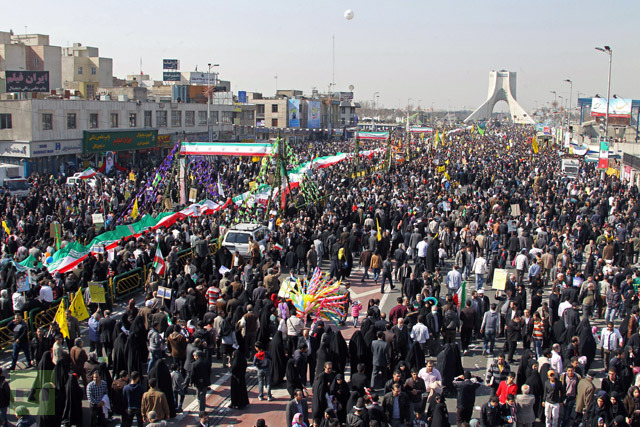

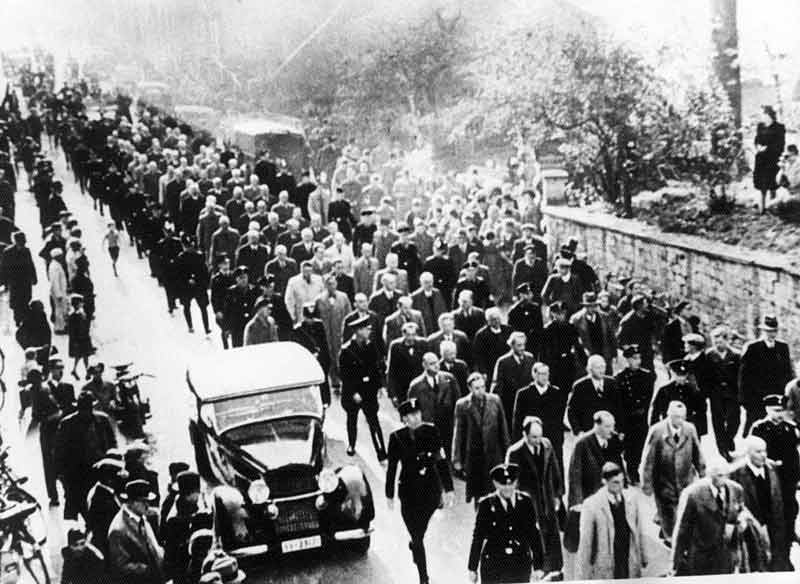
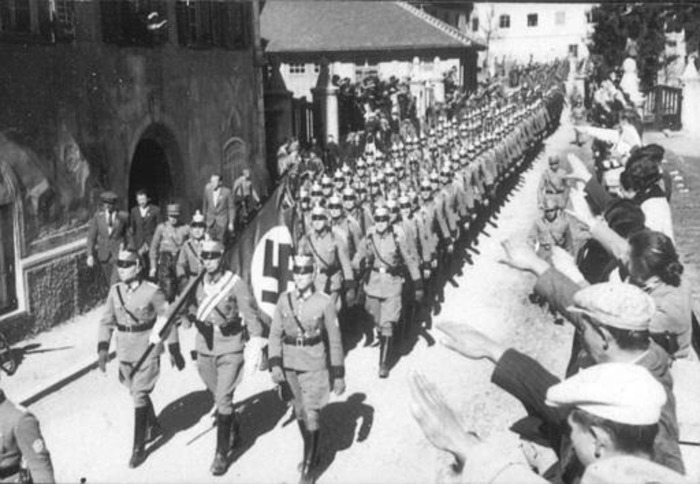
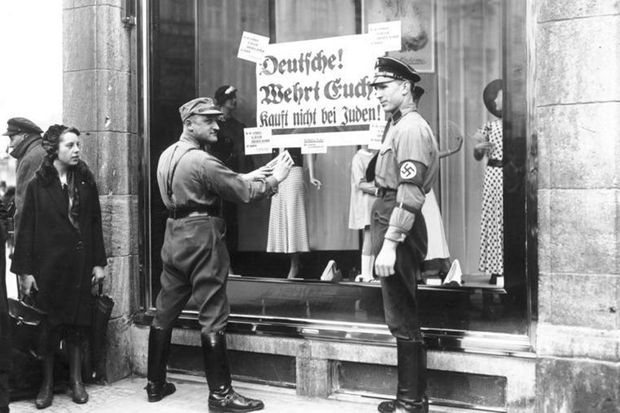


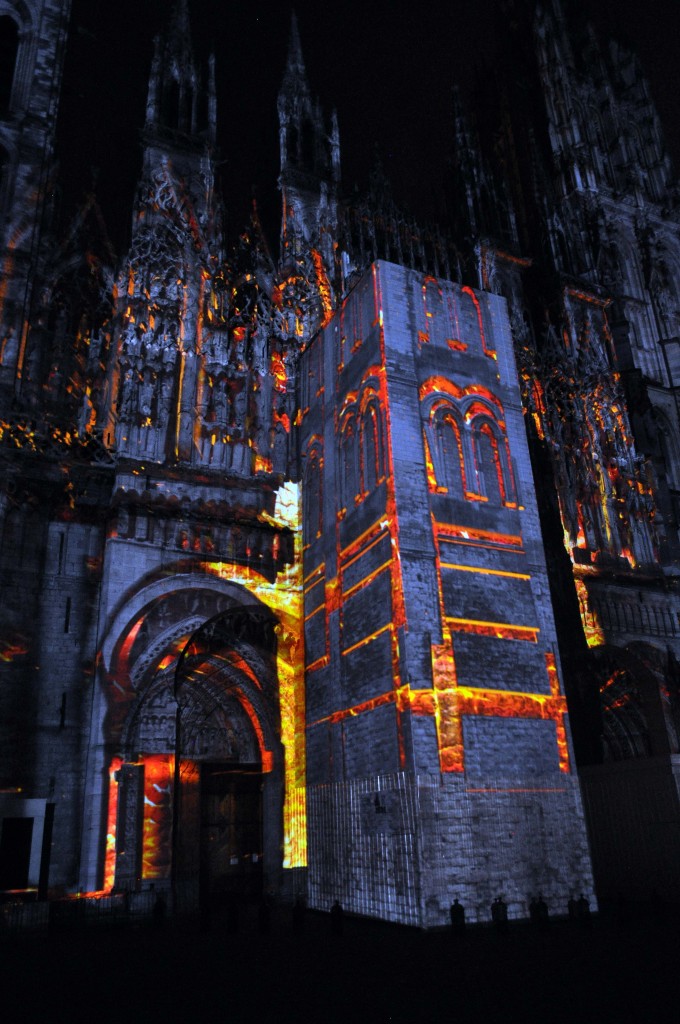
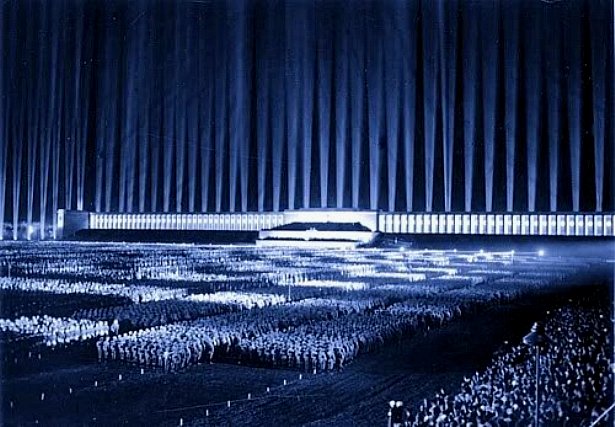
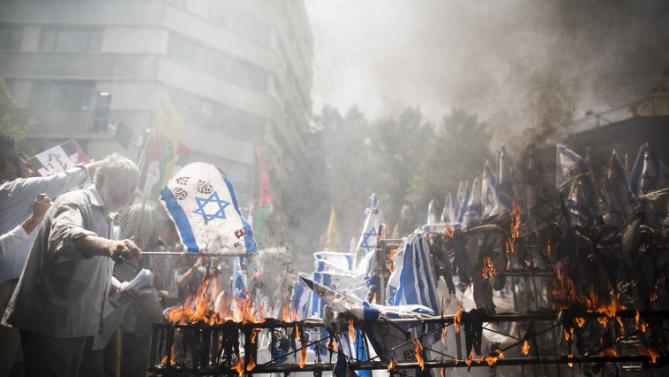
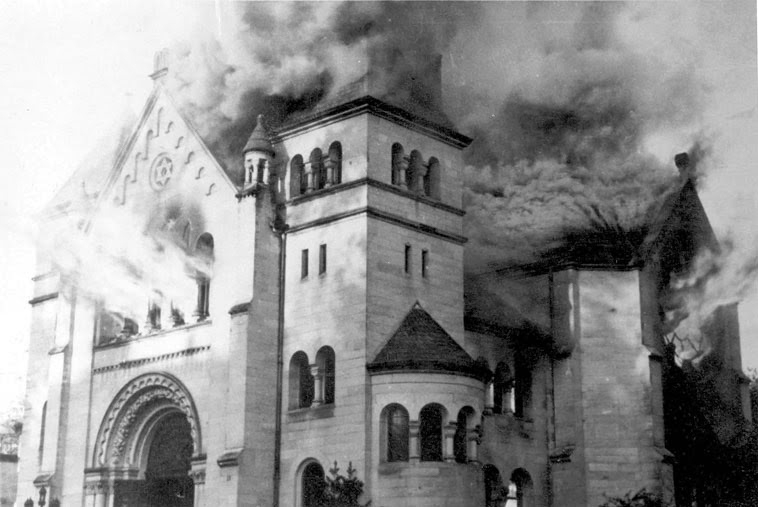




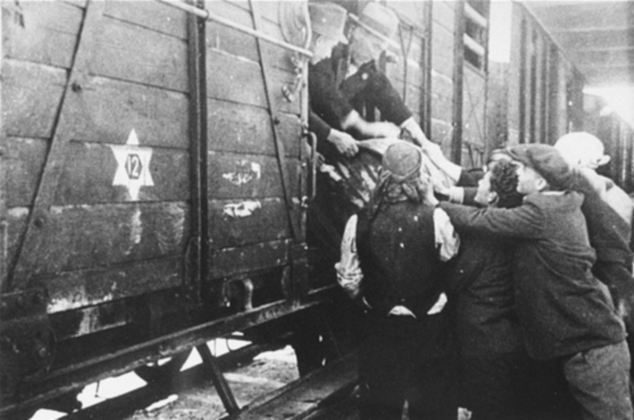

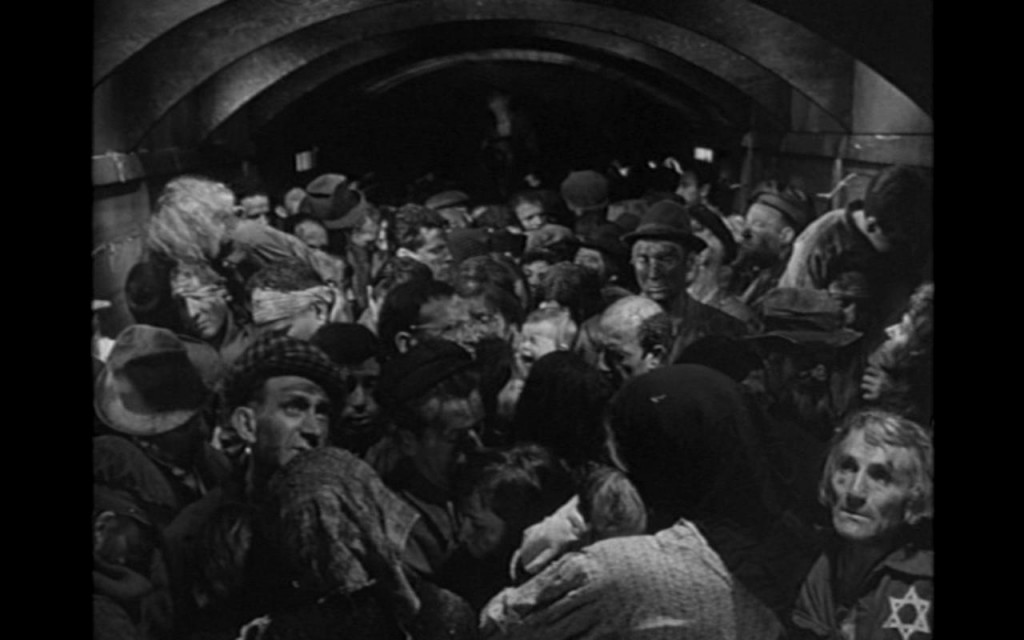
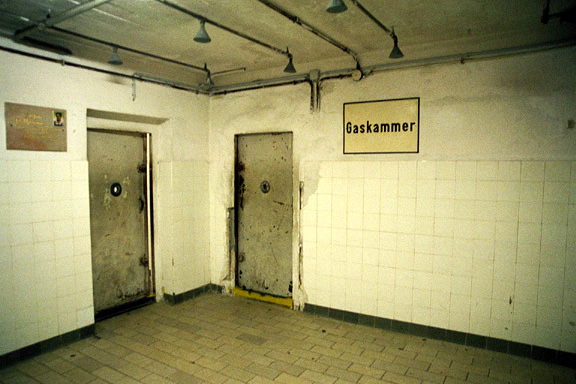


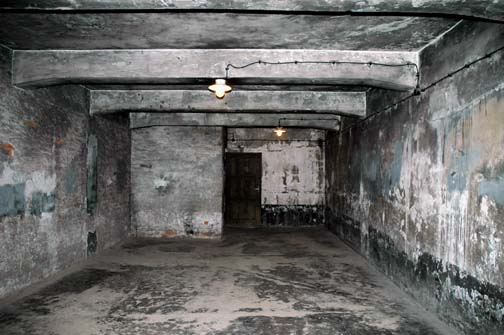
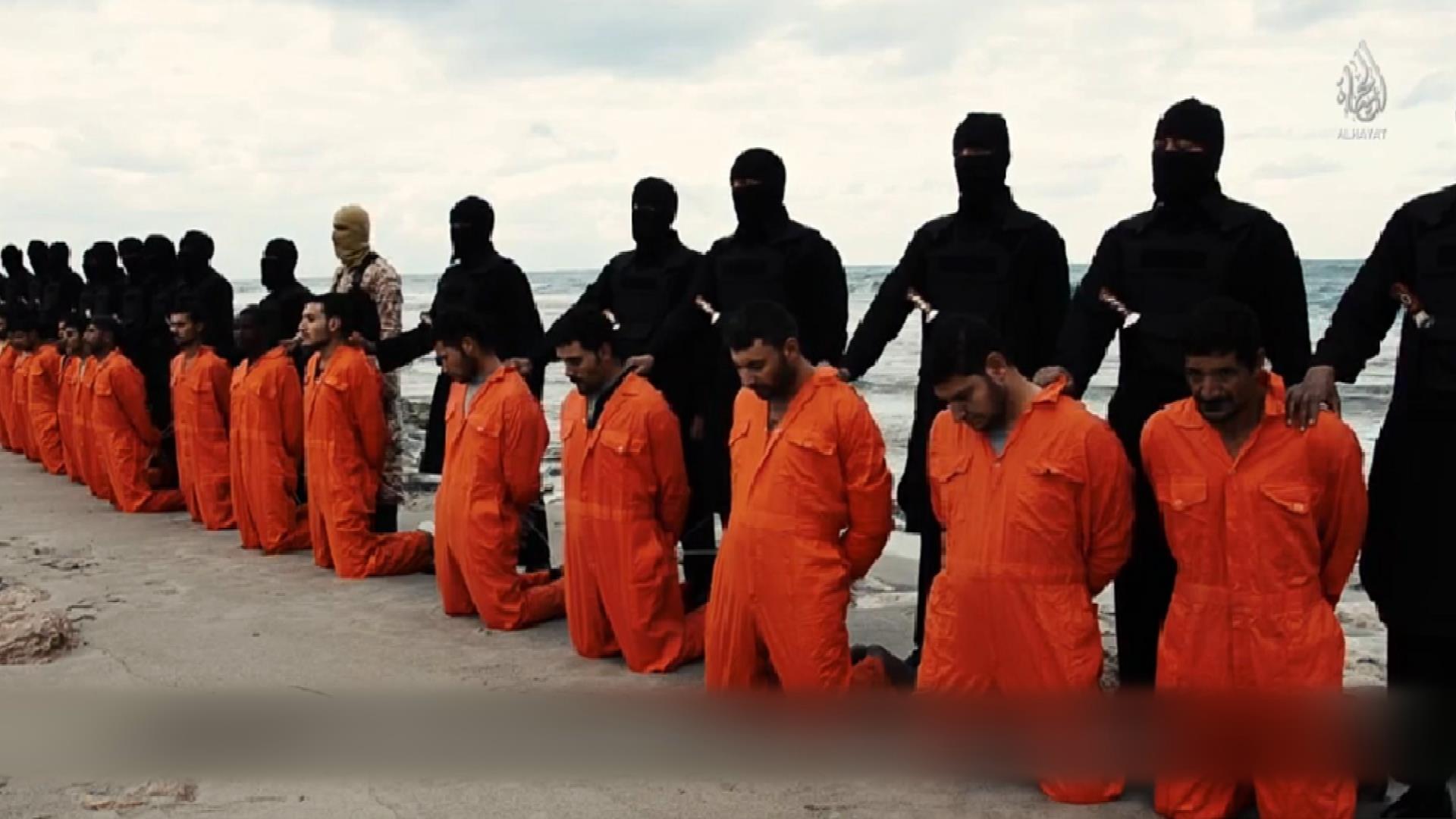

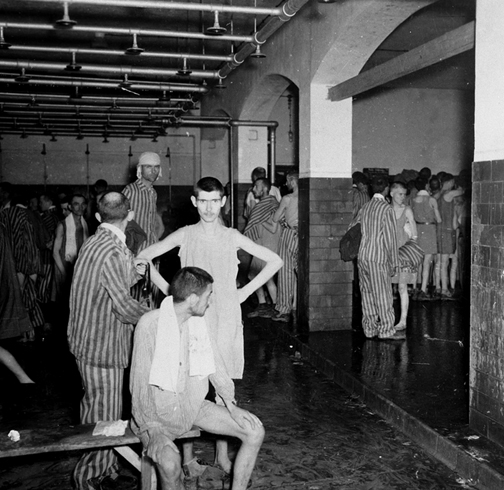


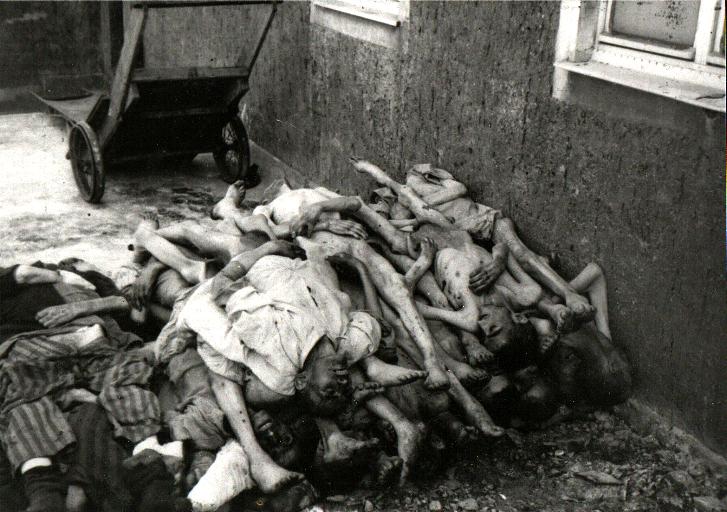
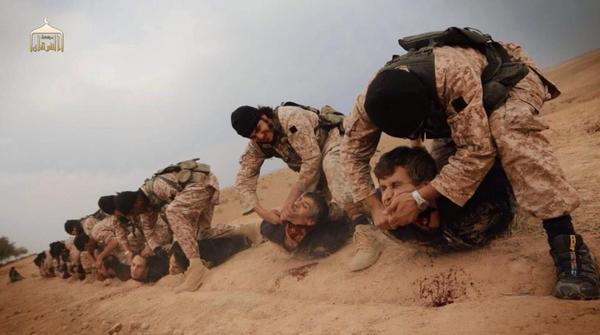


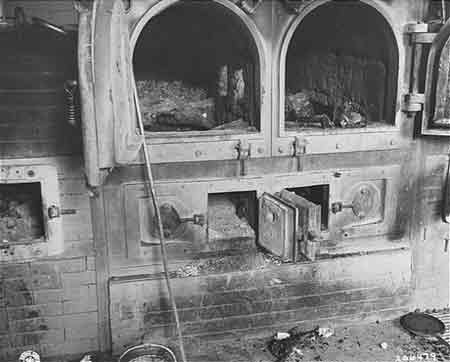
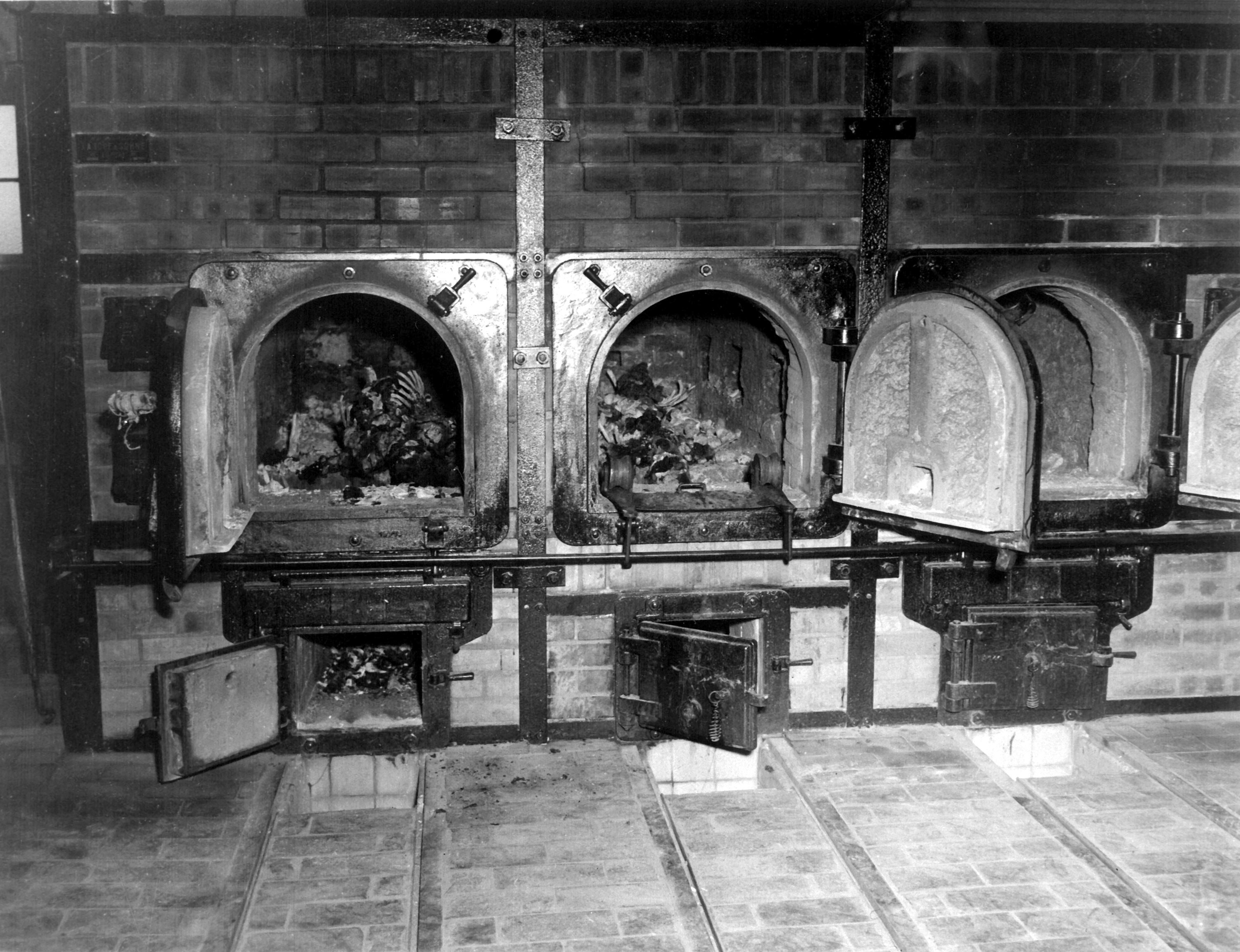
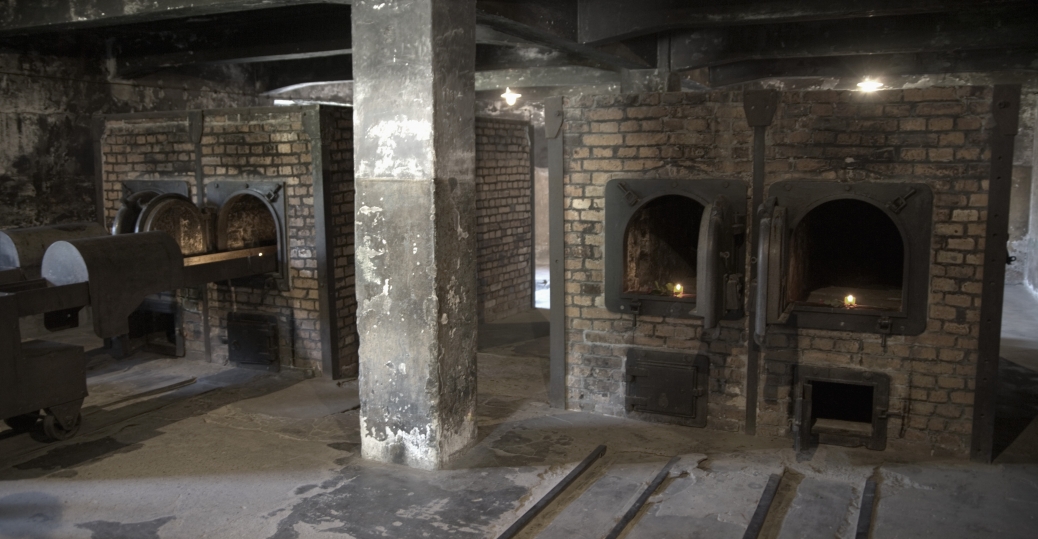
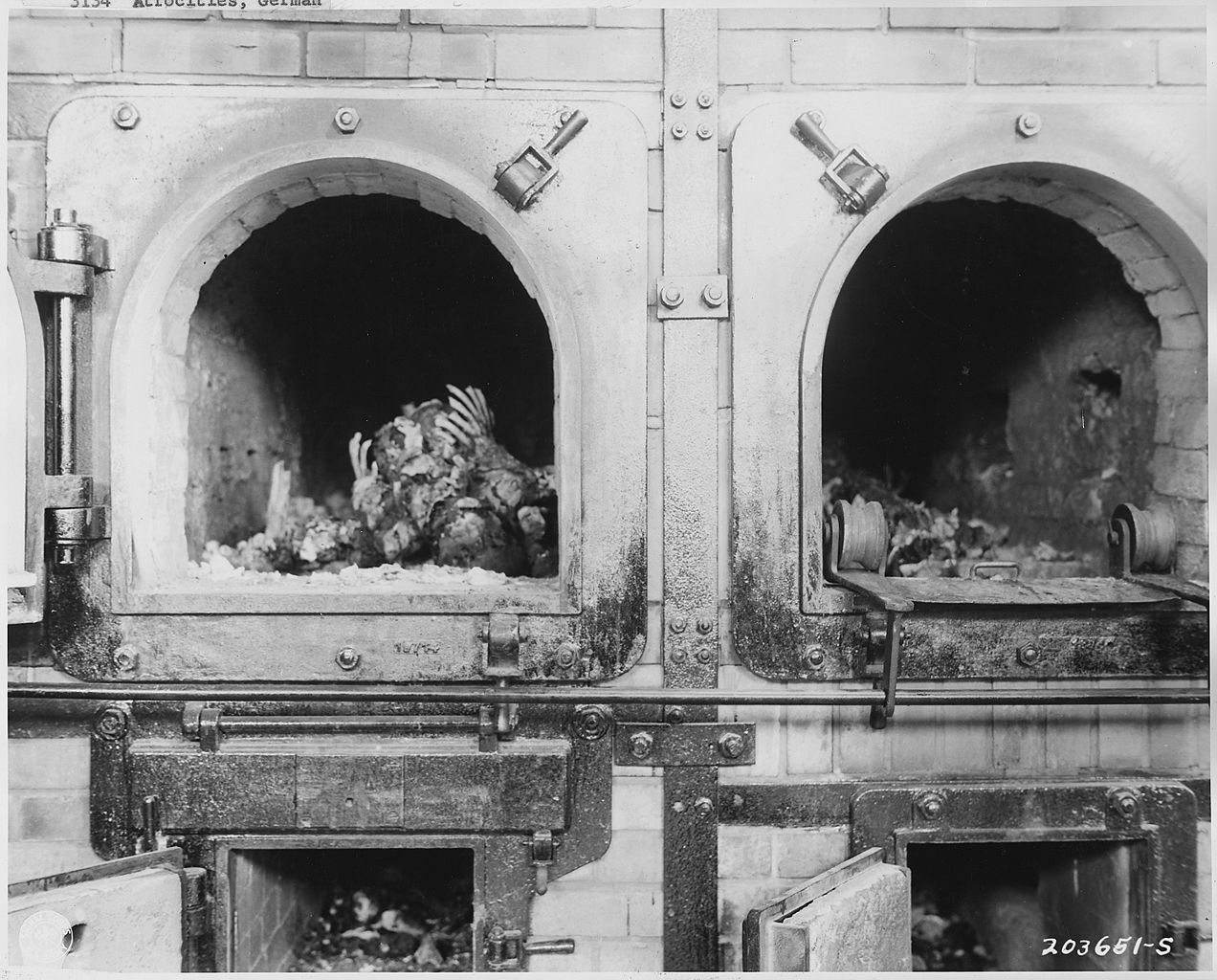
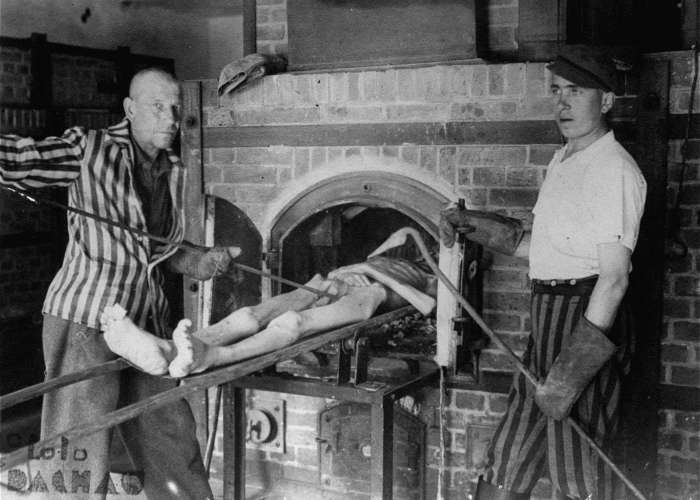
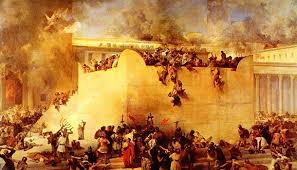
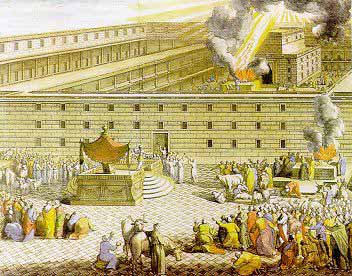
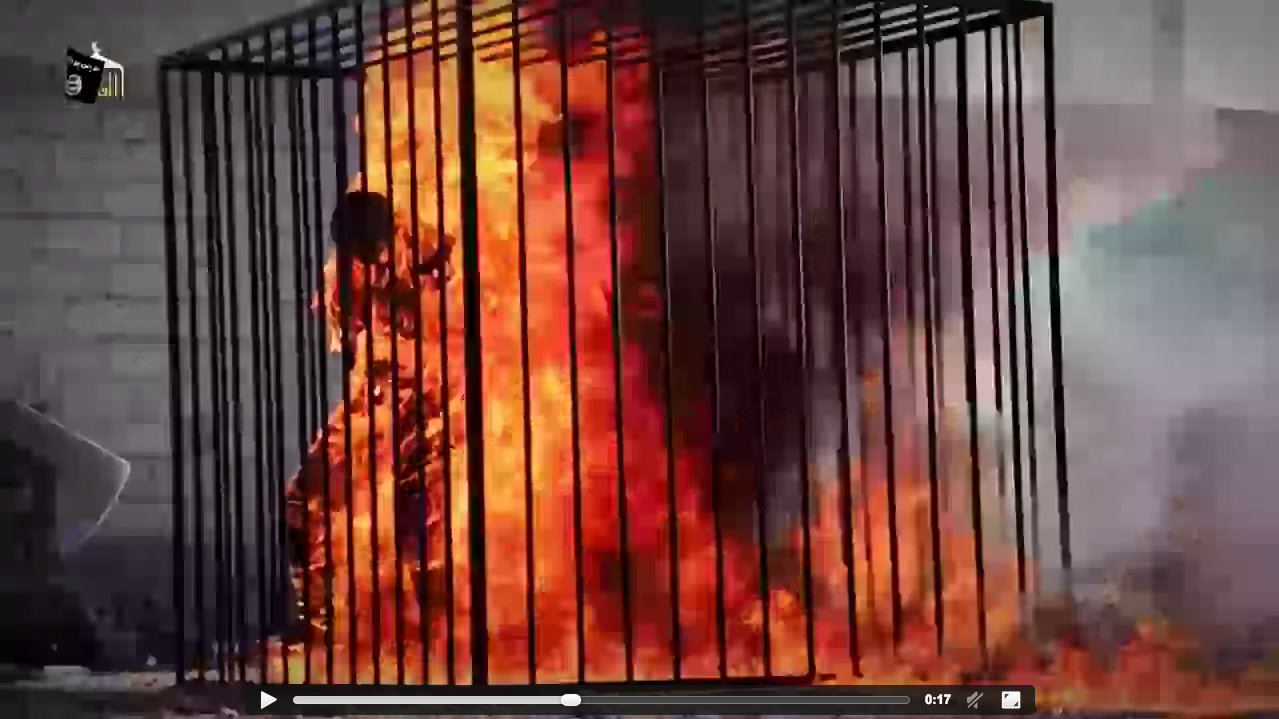
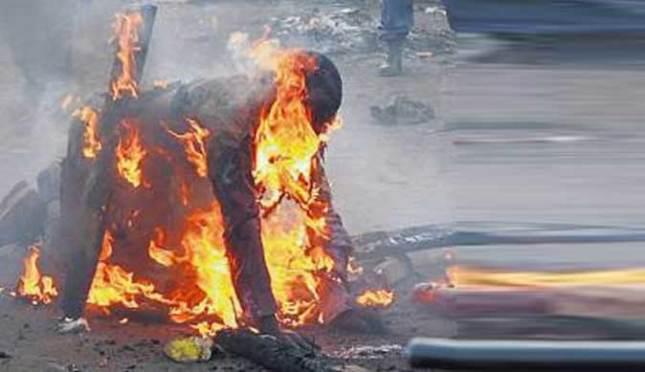
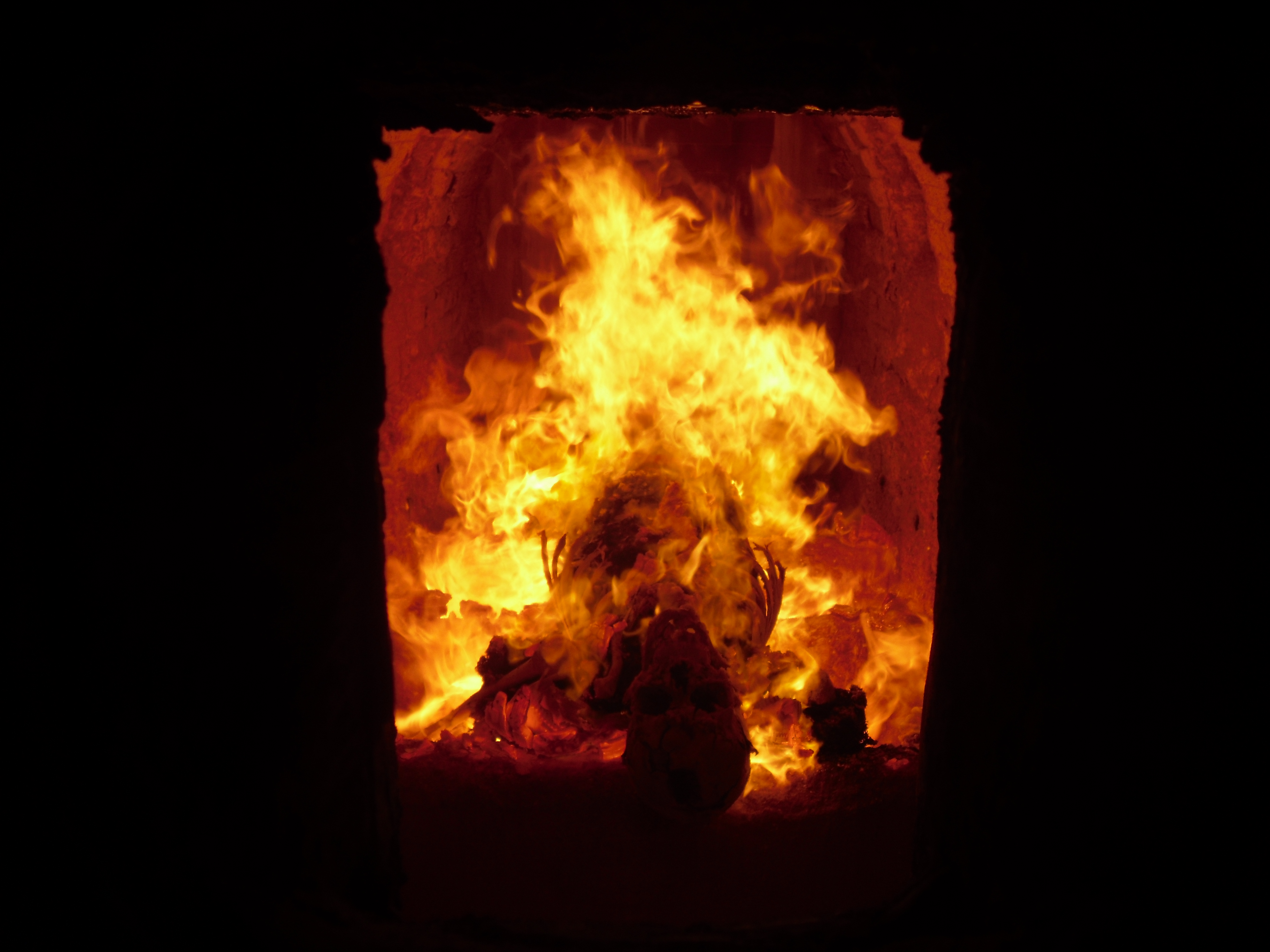
I wrote this to a friend. . .
“We see scriptures on the mark of the beast, and we have a set image. It is akin to life as it is now, with a new economic currency.
That is incorrect. We have gotten it wrong.
For nearly three and a half years, every moment of every day will have but one purpose, one mission in the lives of those that accept the Antichrist:
The rounding up, packaging and transport of the Jews (and few Gentiles left) that will not worship the AC.
That is ALL that the world will be interested in.
I also had the image of the guillotine, as most of us did. Sadly, that is not inhuman enough. In fact, anything but the ritual sawing off of the heads of the Jews will not be tolerated.
Thousands of train cars and planes will be packed with Jews, bound for the slaughter.
They will not be fed, allowed to use the bathroom, or even loosed. Once they are bound, they will spend those last few days in a tortured state, tied down like cattle, bound hand and feet, slave pack, on a Nazi train or plane of death.
It will be a barbarism the world has never before seen.
Imagine the horror of being bound hand and feet, for days on end, muscles cramped and atrophied from lack of movement.
You are pulled from a meat train, drug across the stones to the place of slaughter.
You are tossed in a pile like steaks to be butchered.
You watch helplessly as Jew after Jew is drug up the steps of the Temple, and the black clad anti-priests of Allah drag the dulled blade of a blood soaked knife back and forth across the throats of those in front of you.
All you can do is lay there bound, as cattle, and watch as the number before you diminishes. Soon, it shall be your turn.
No one cares about your cries, or the cries of any other.
You watch in horror as some of the bodies are thrown into the fires of the altar, still twitching, where the executioner was too lazy to completely saw the head off.
The still twitching body that was still alive as the flames consume their flesh.”

__________________________________________________________________________
For three and half years, this will be the reality of life on earth. It will not be anything that any of us can imagine.
There is but one group of people on the face of the earth that can truly comprehend what is soon to come. They lived it once before.
Soon, they shall live it again.
Thousands a day. . .
Ten thousand a week. . .
Millions every year. . .
From the moment the image stands in the Holy Sanctuary;
From the moment it speaks death;
All the world shall burn.
In few short months, all will be ready. The altars will stand. The sacrifices will lay bound as cattle to the slaughter.
The Throne of the Antichrist shall stand ready, and for 1,150 days the world will be the pit of hate, death and darkness that Satan has always desired.
There shall be no corner of the earth that escapes.
There shall be no soul that can avoid it.
All shall make a decision.
Worship the Beast, or die.
Wear his name, or die.
The Temple shall become Hell on earth. The fires shall never cease, burning blue flame with the blood and bone of Jews, and those few left that still dare to call upon the name of Jesus Christ. . .
Day and night they shall burn. Never quenched, never cooled. Sacrifice upon sacrifice, Jew after Jew, Christian after Christian. . .
Thousands and thousand thousand they shall come.
Never ending, never ceasing.
The blood shall never dry. It shall remain puddled and wet, upon every last stone of the Temple Mount.
A stench, woeful and unknowable to mortal man, shall rise for the first time upon the face of the earth. It is a stench that cannot be escaped.
The smell of death, of horror, of abomination, of desolation decreed shall infiltrate every crack, every crevice.
None shall escape it.
The world will fill will a blood drunk lust. Insanity shall prey upon the minds on men, who are no longer men.
They are the walking dead, their soul already surrendered.
Those you once loved, and once loved you, shall explode in a near sexual frenzy as they dream, imagine the pain and suffering you are soon to endure.
Their eyes are empty. There souls is gone. There is nothing left but death and depravity in them.
They lust and long to watch you burn.
They lust and long to see all who worship the God of Abraham, Isaac and Jacob burn.
They shall get every desire of their heart.
You shall be their sacrifice to their god.
After all, is not a sacrifice what all god’s desire?
So shall it be done.
And if those days had not been cut short, no human being would be saved. But for the sake of the elect those days will be cut short.
Turn now to the Lord and Savior Jesus Christ.
You do not have tomorrow.
May the Lord keep all that read these words, view the images, and weep.
In the name of the Most Blessed Lord and Savior, Jesus Christ.

